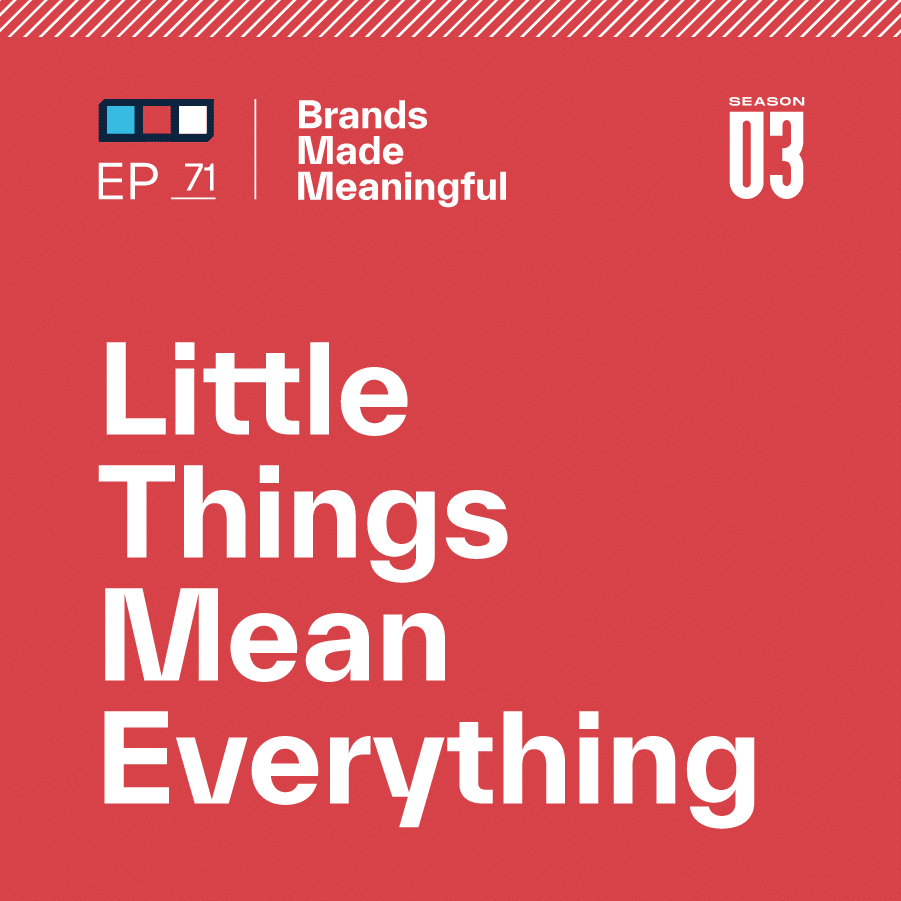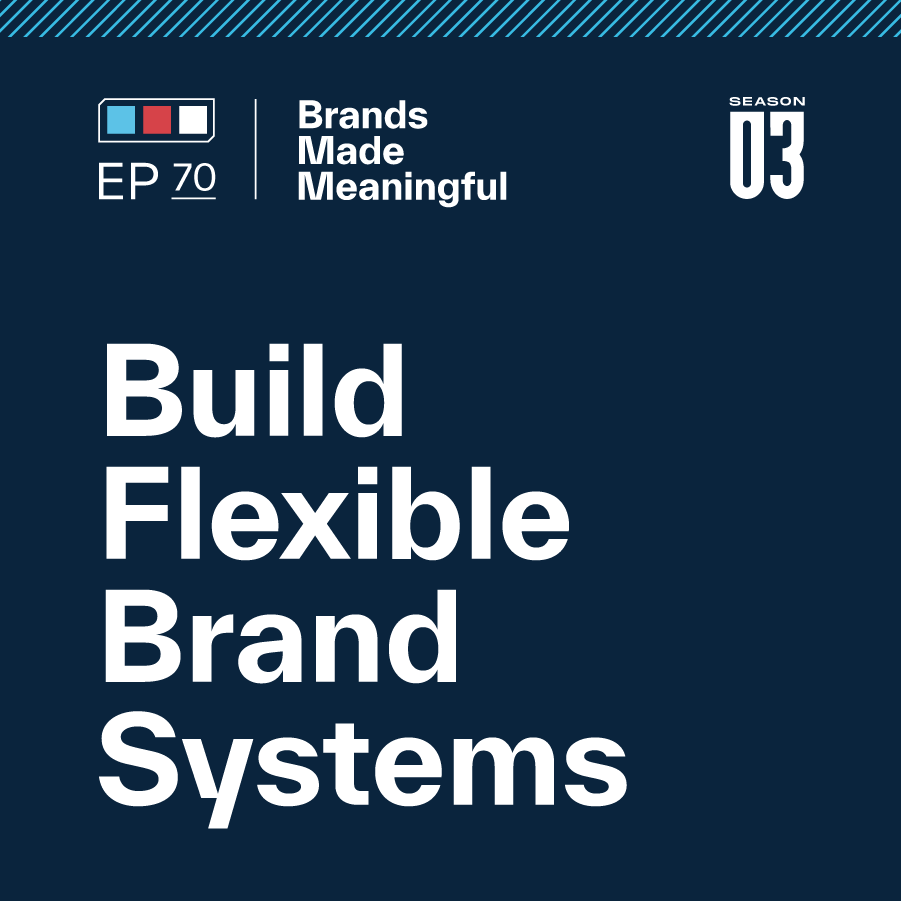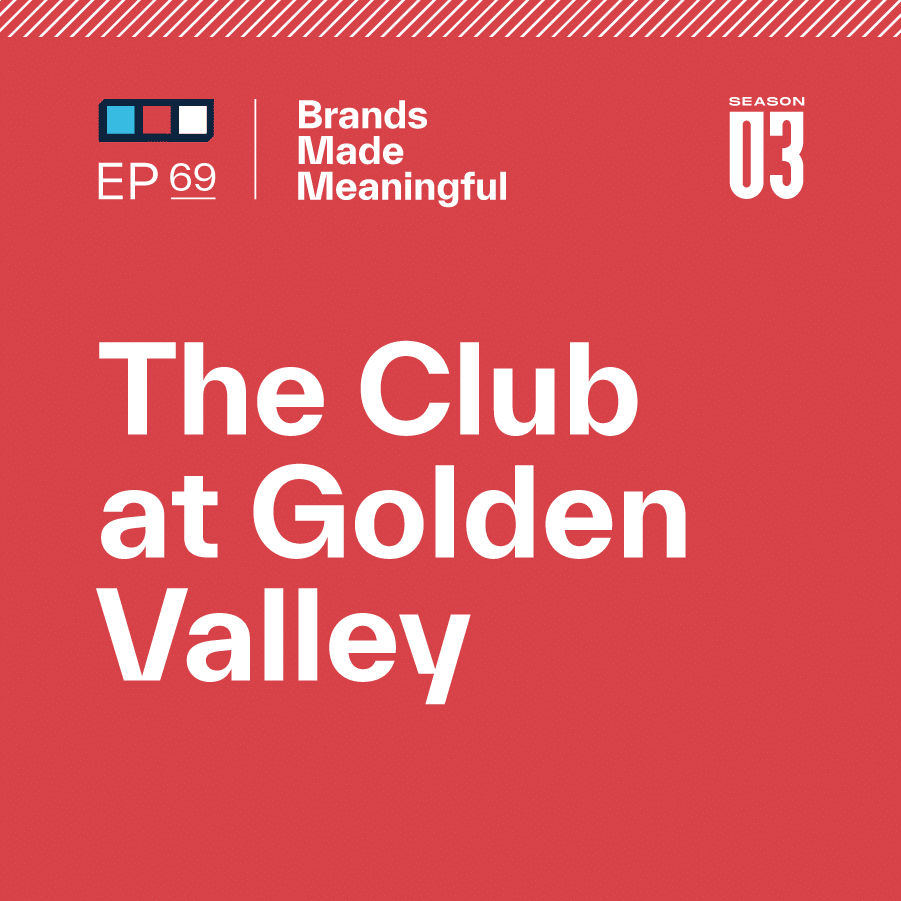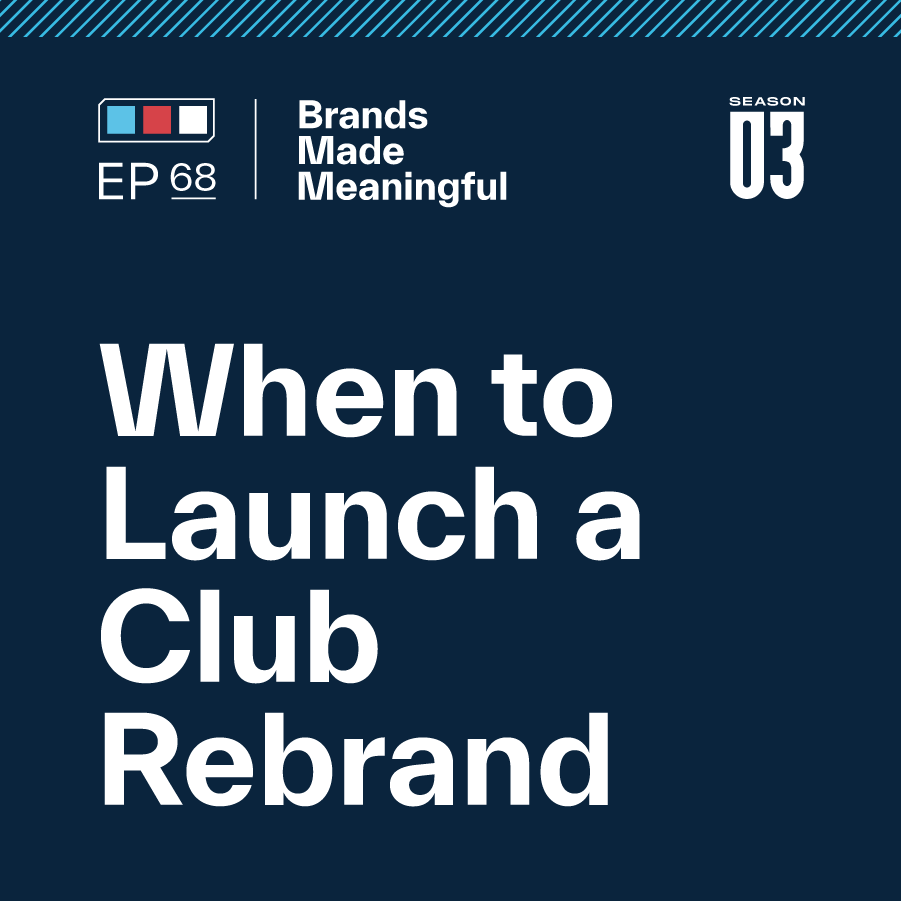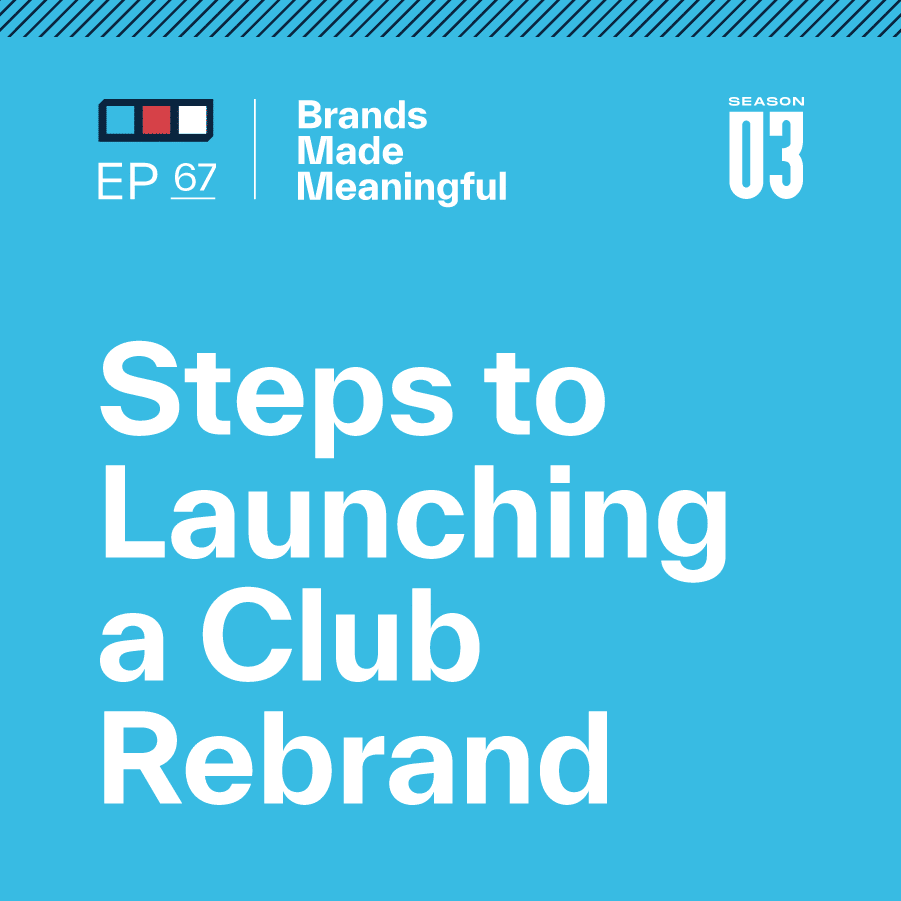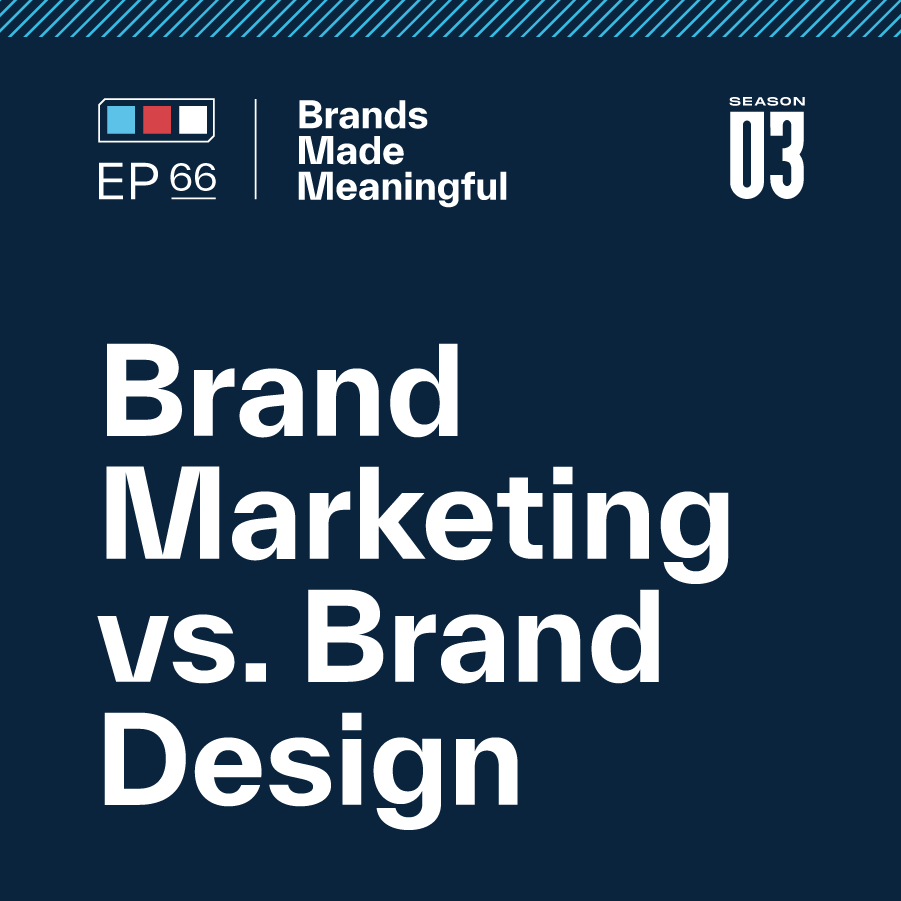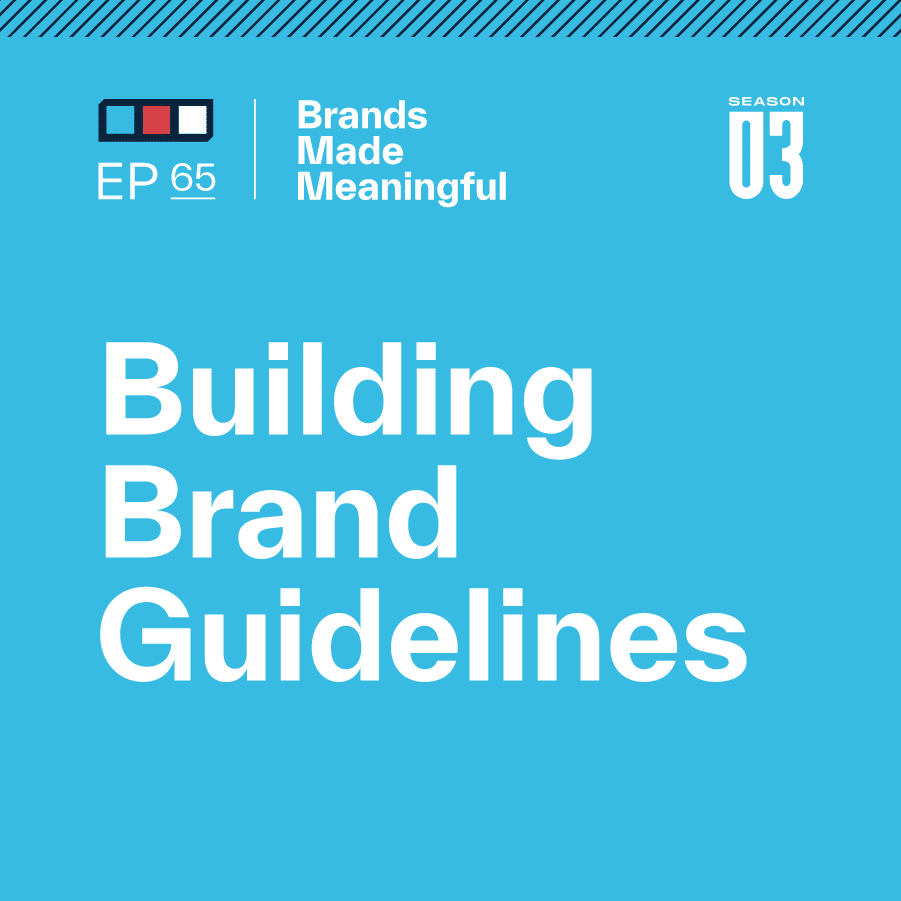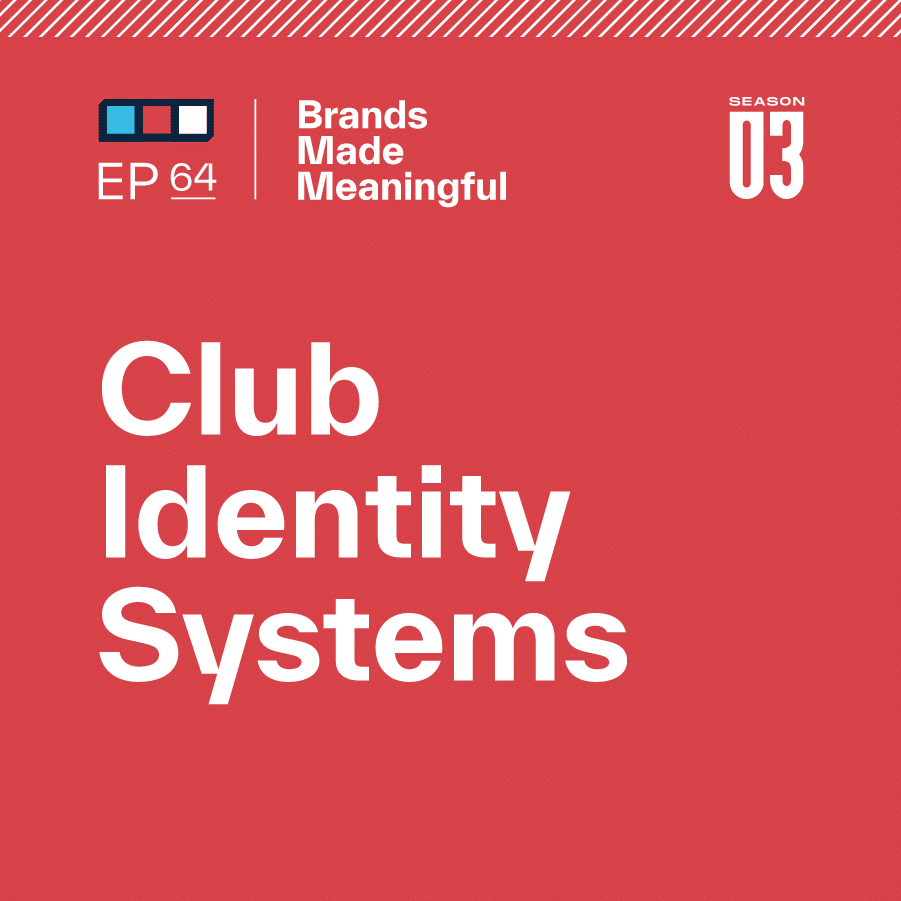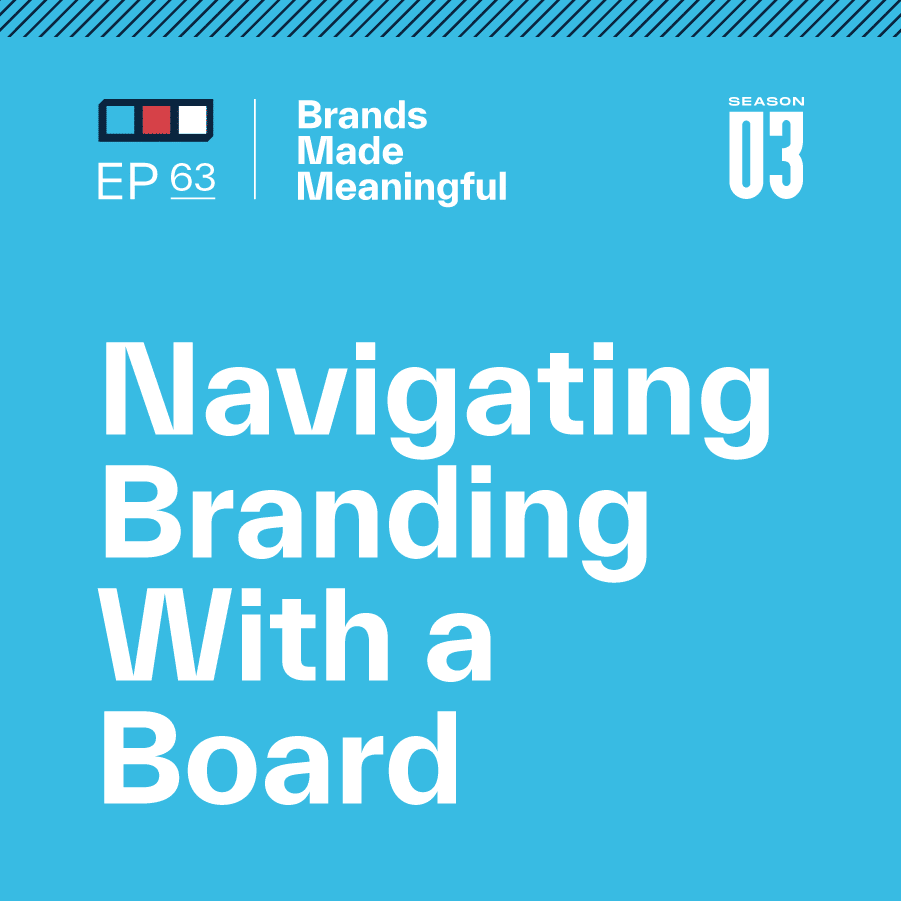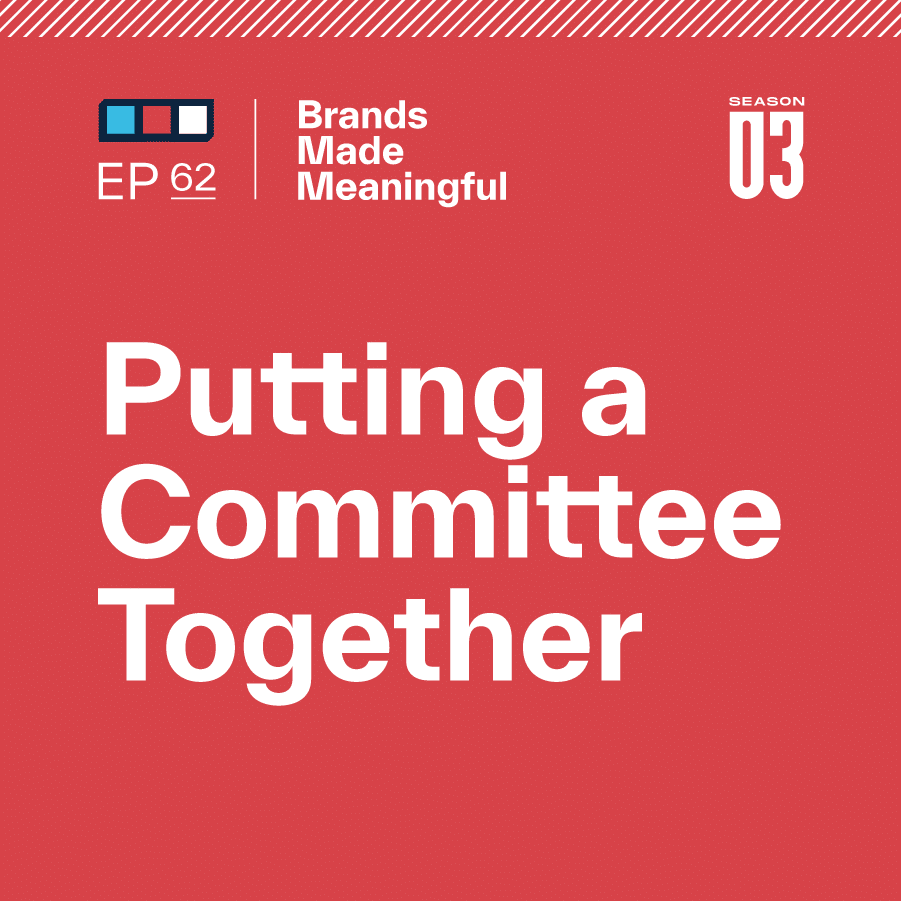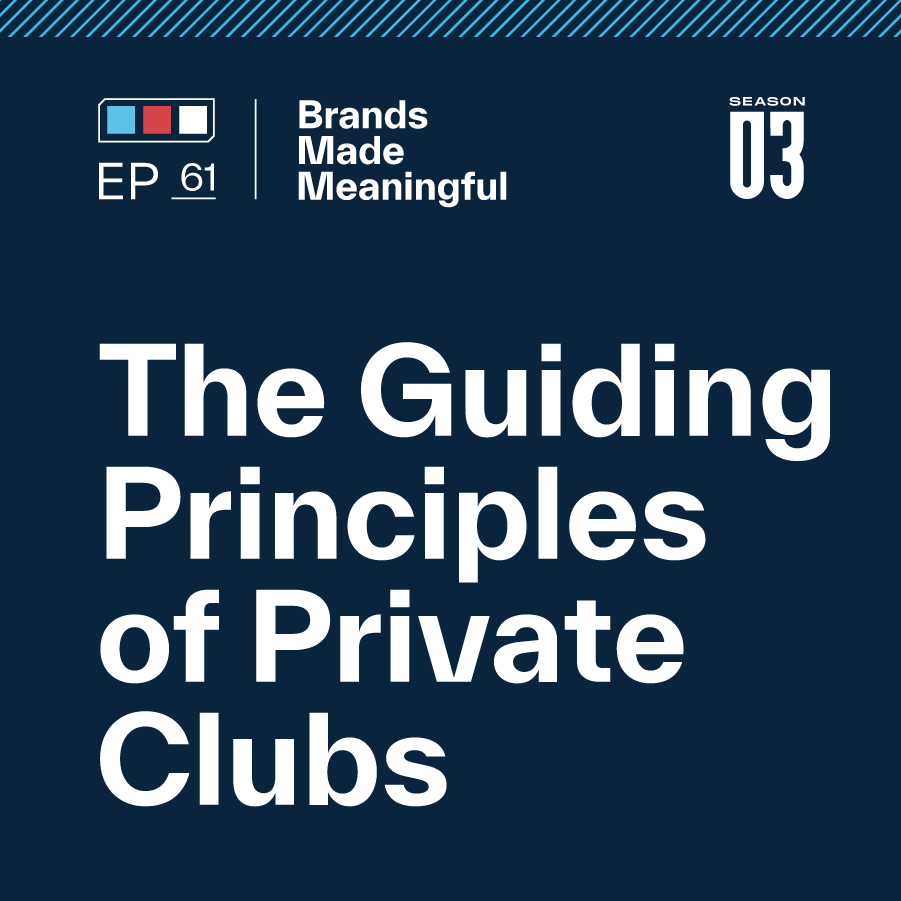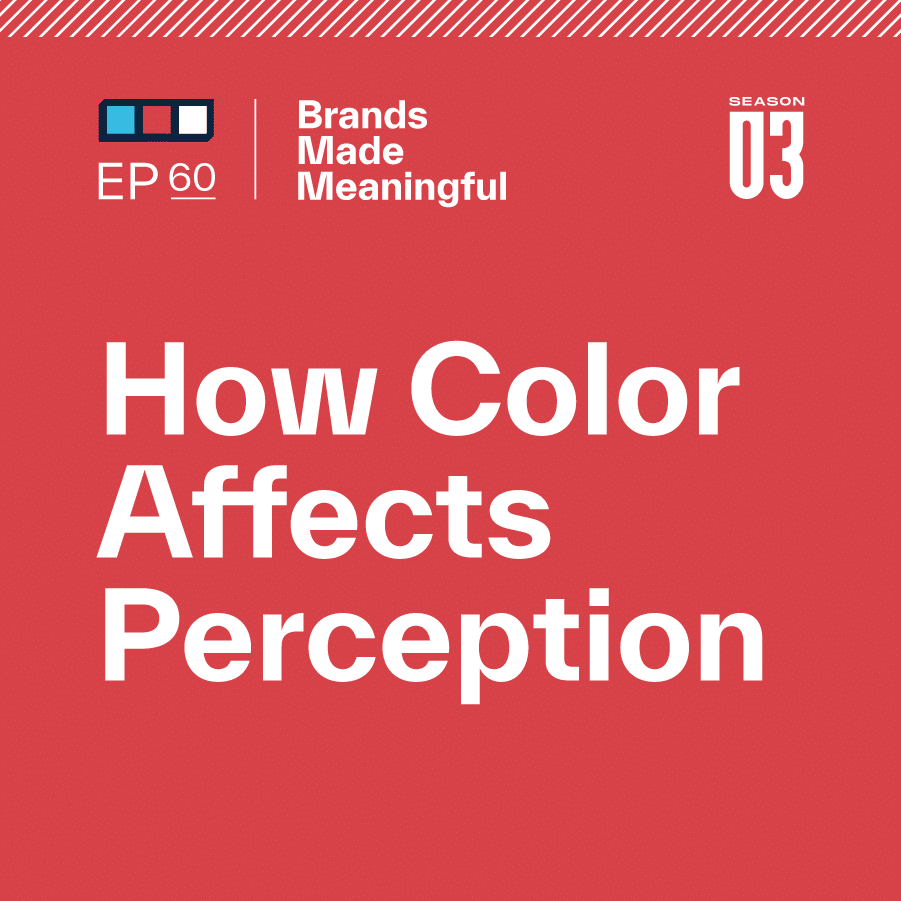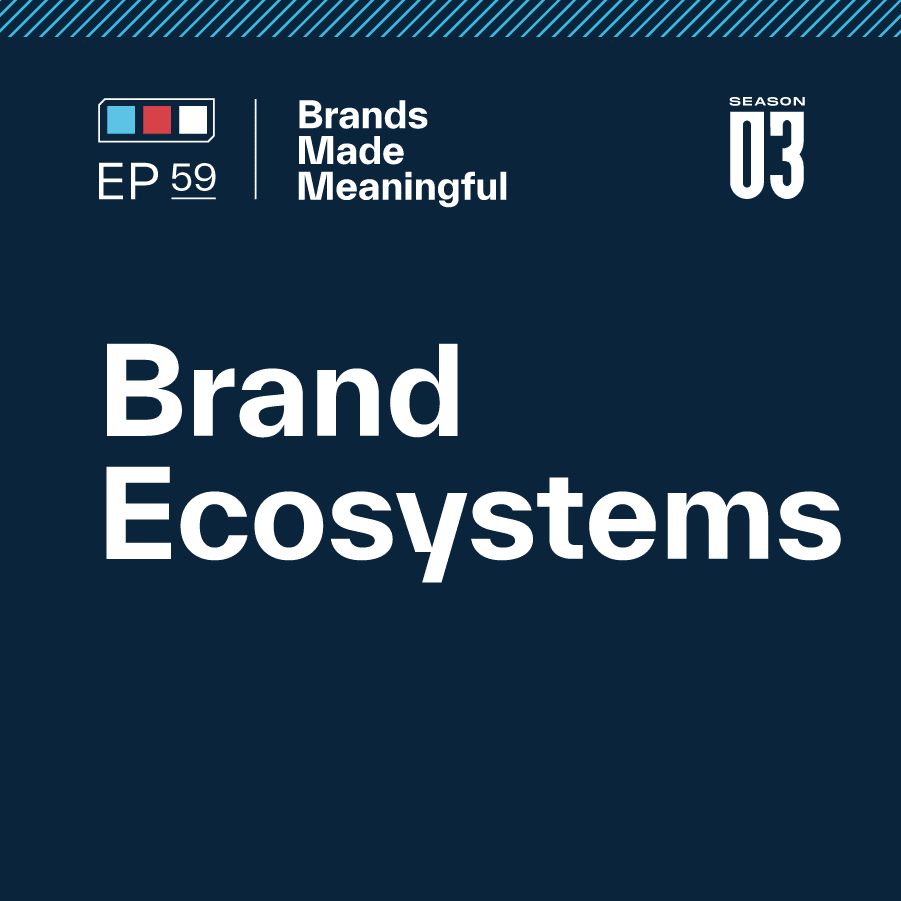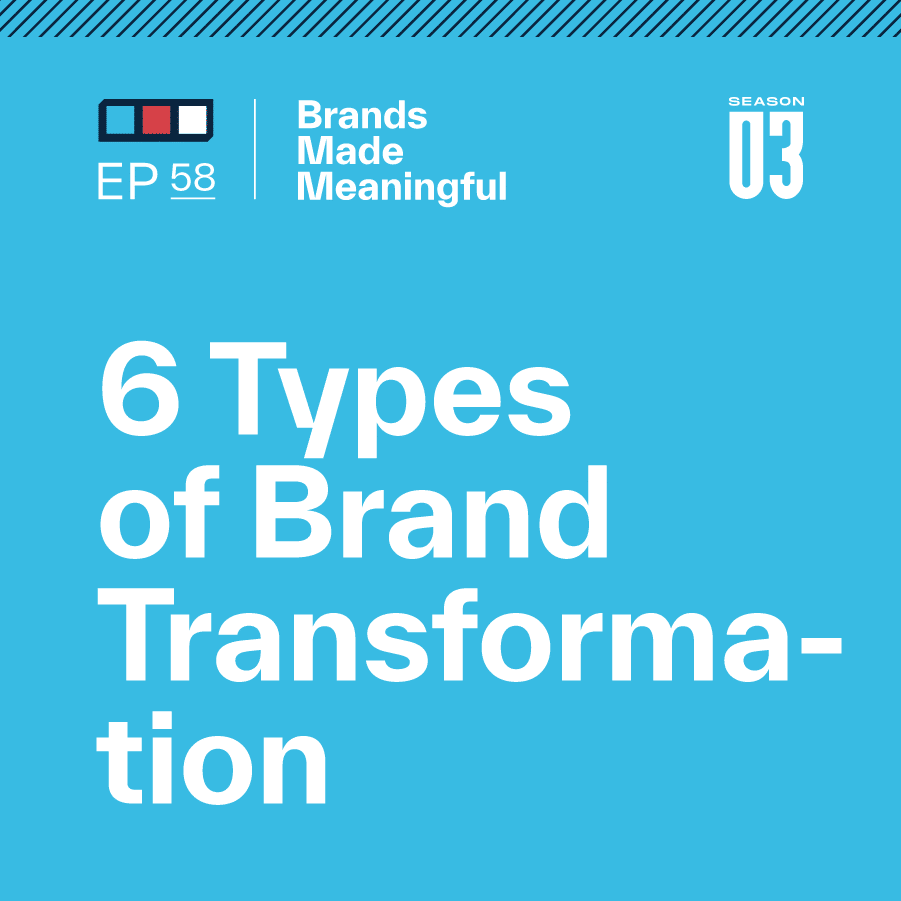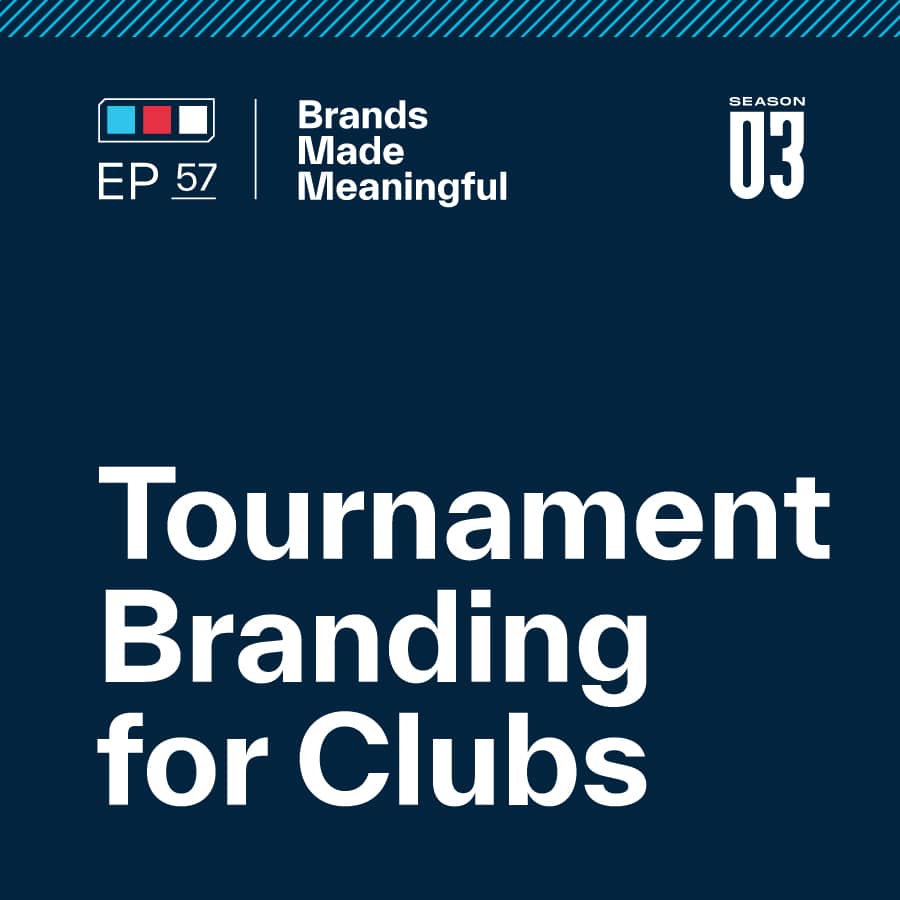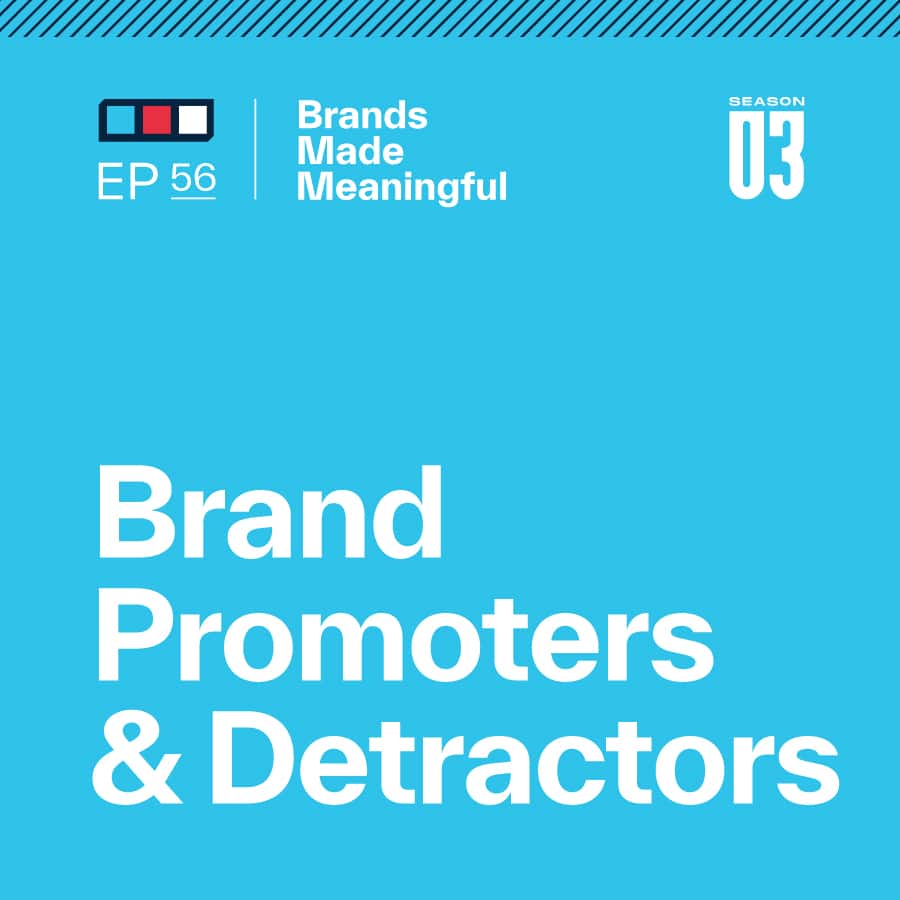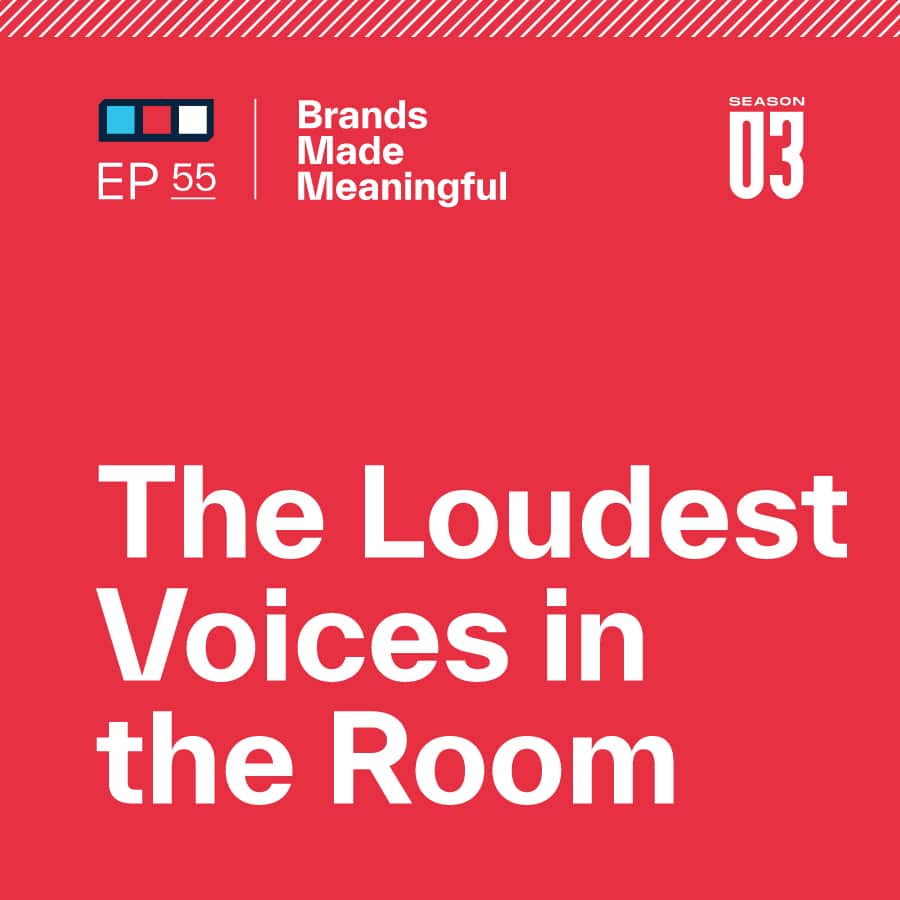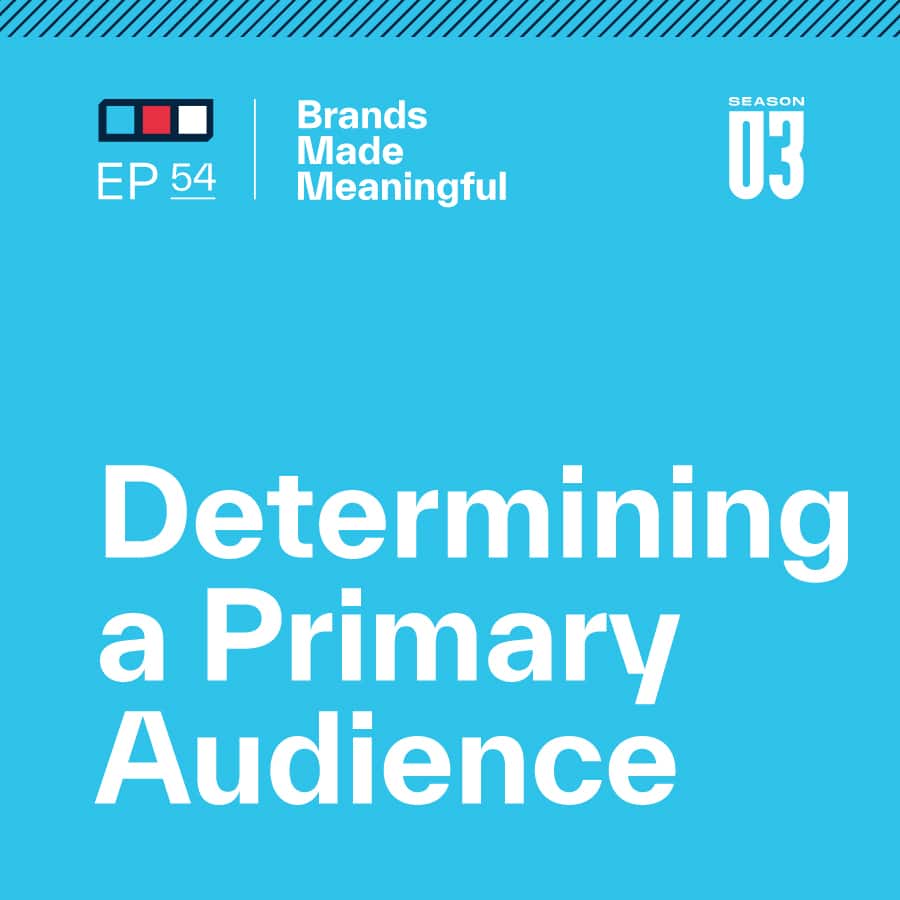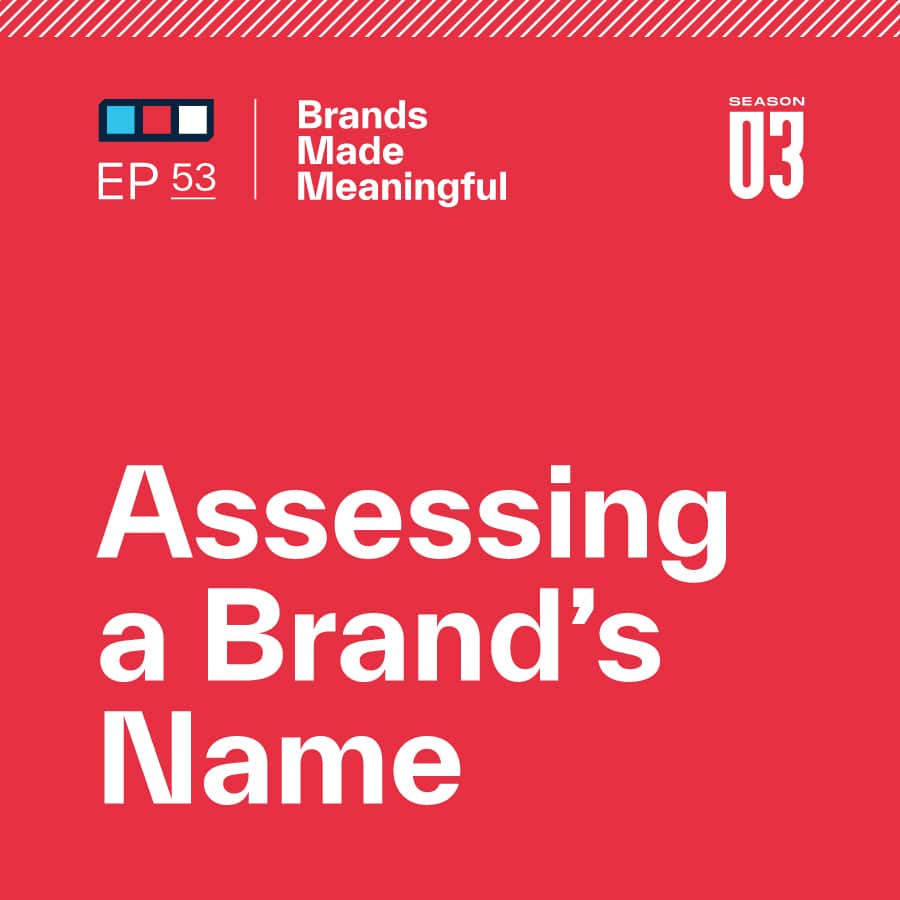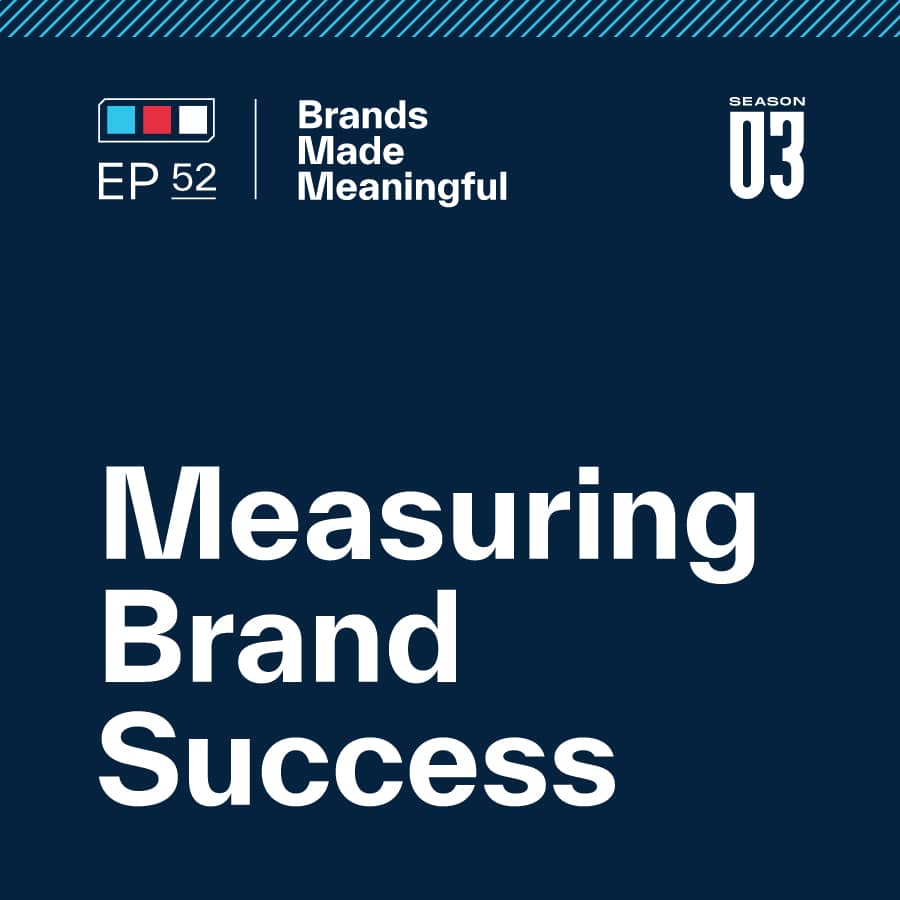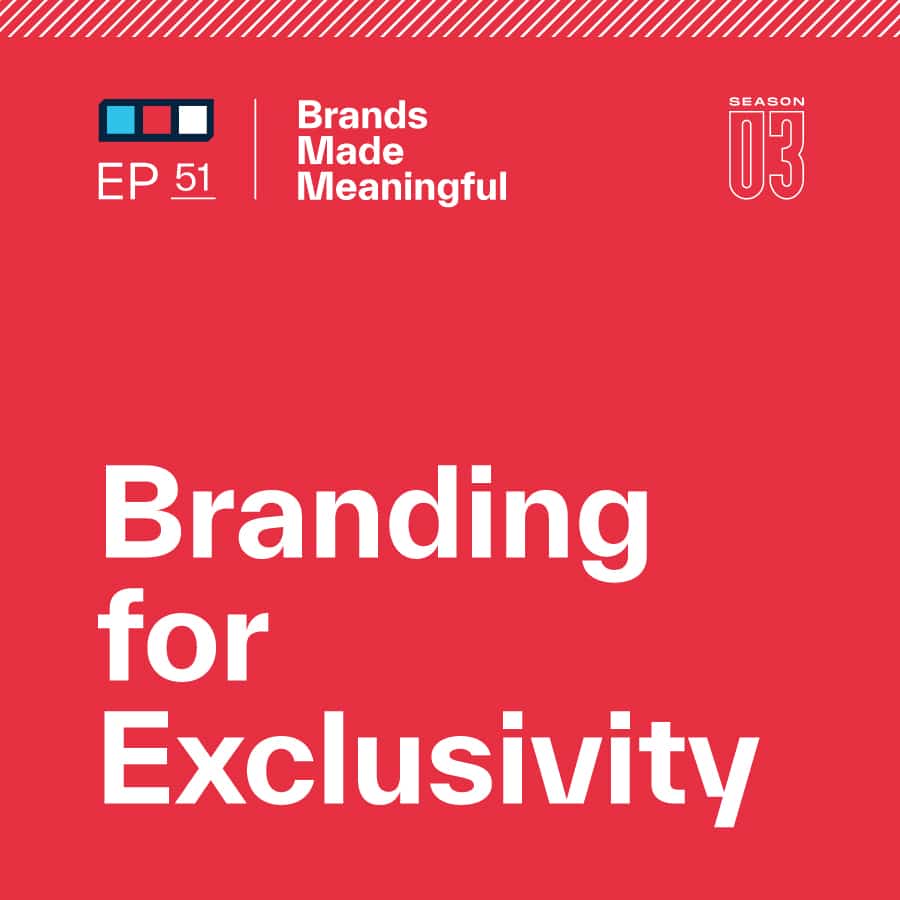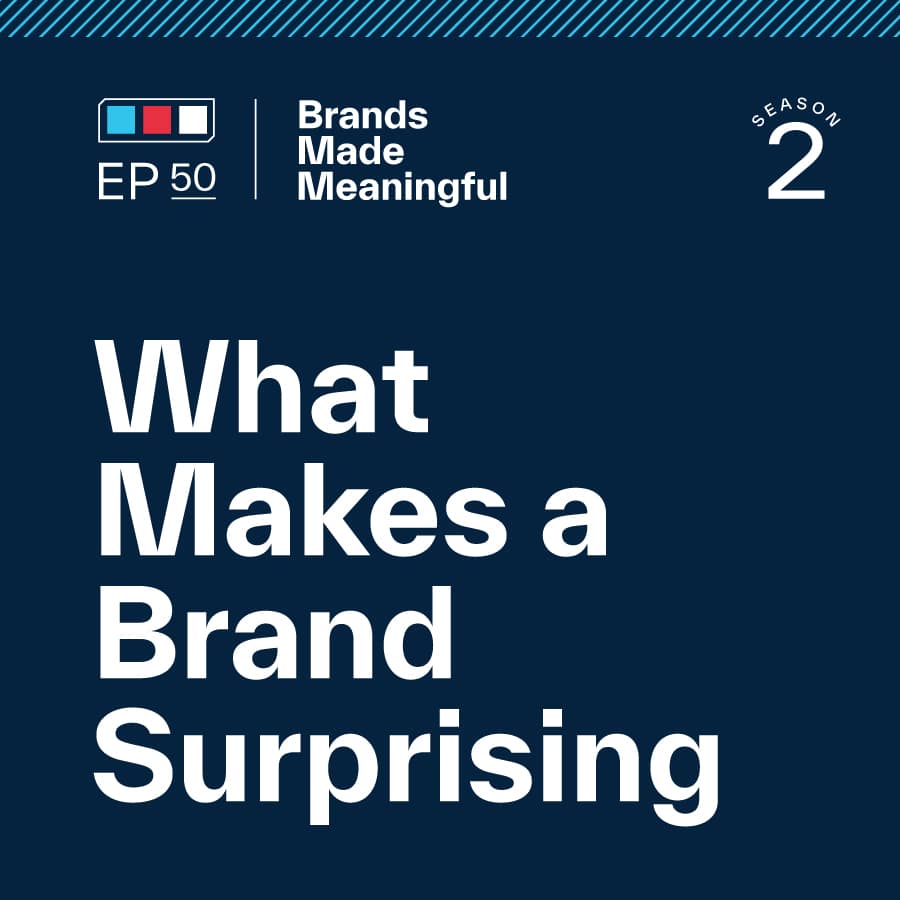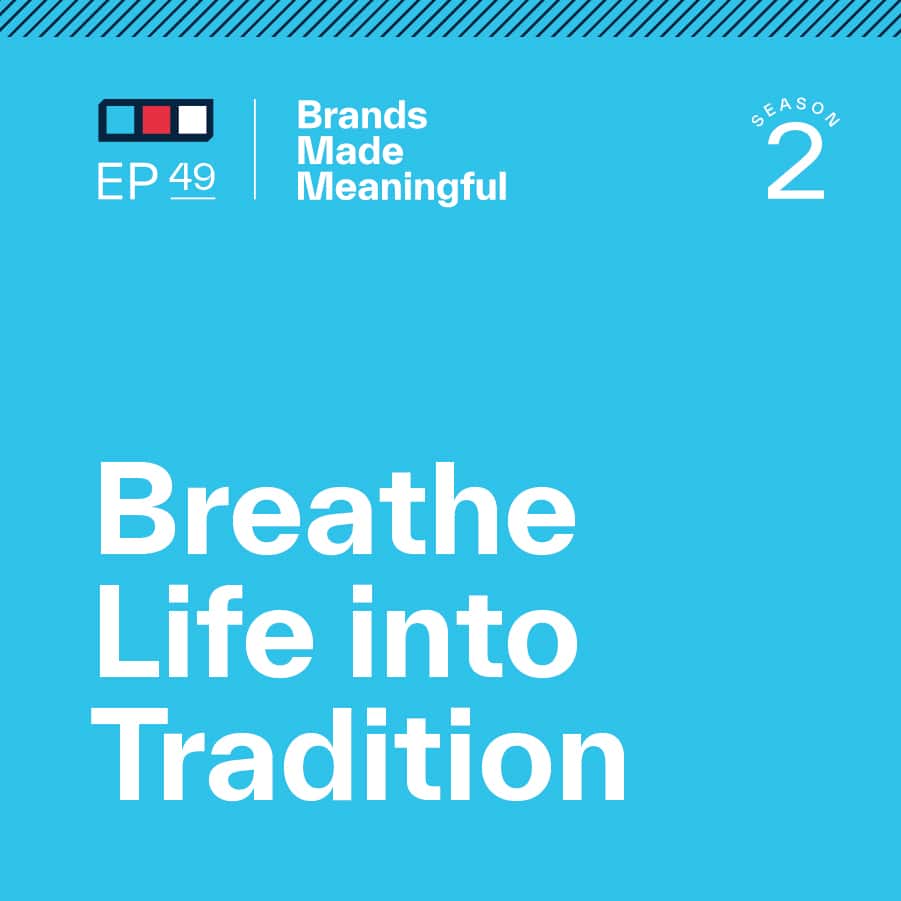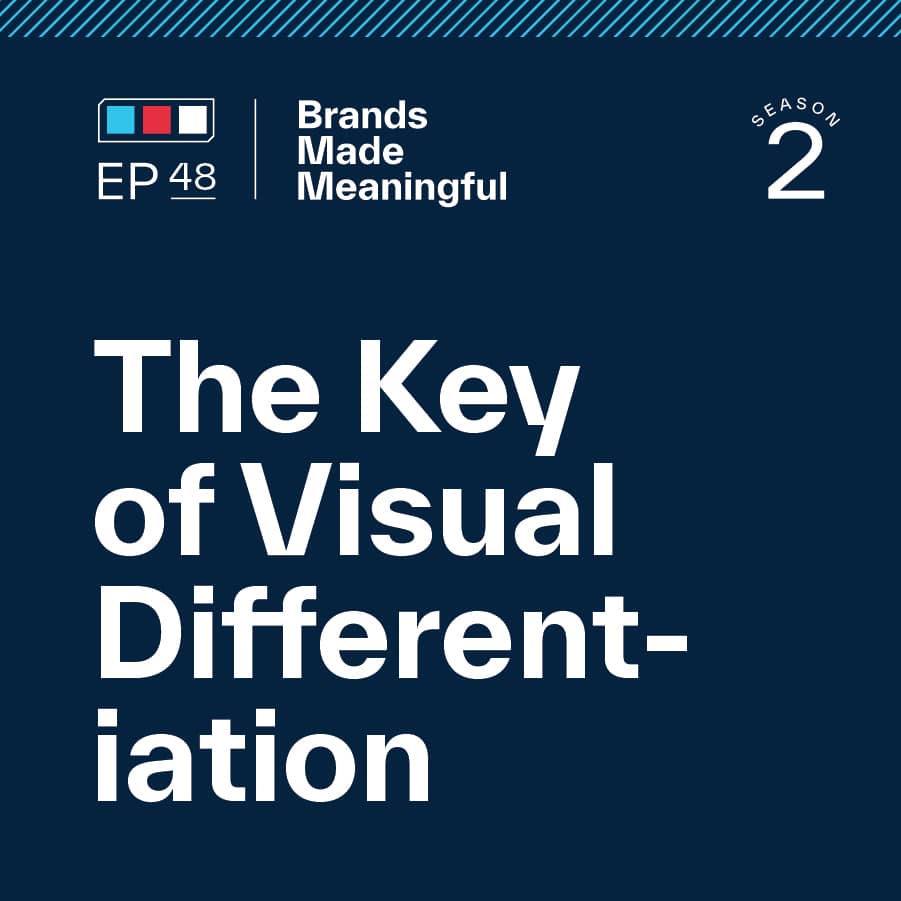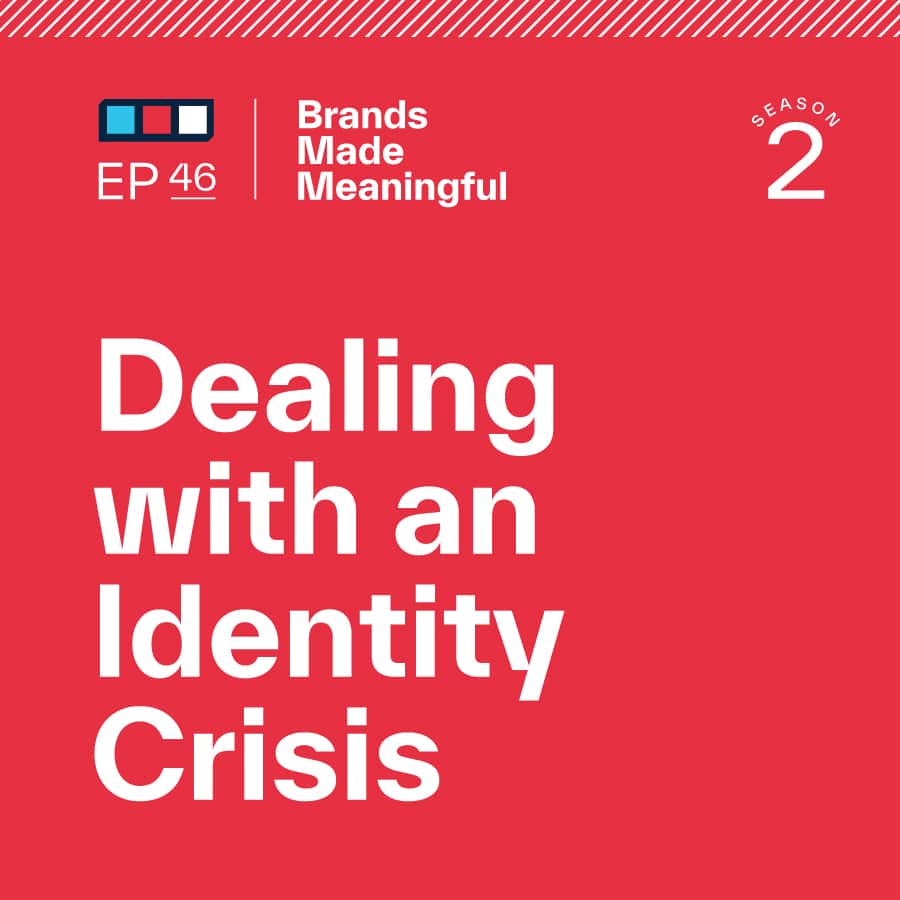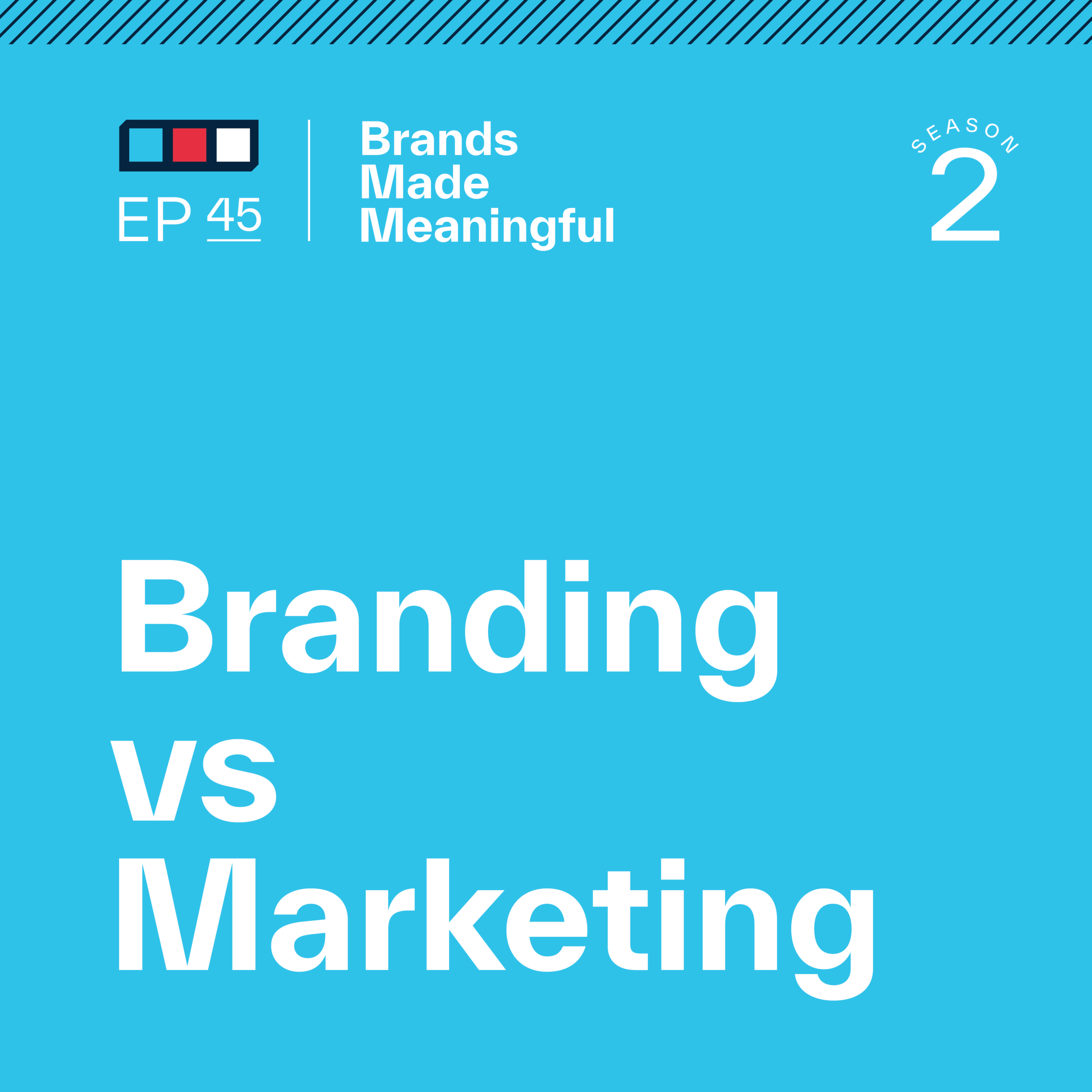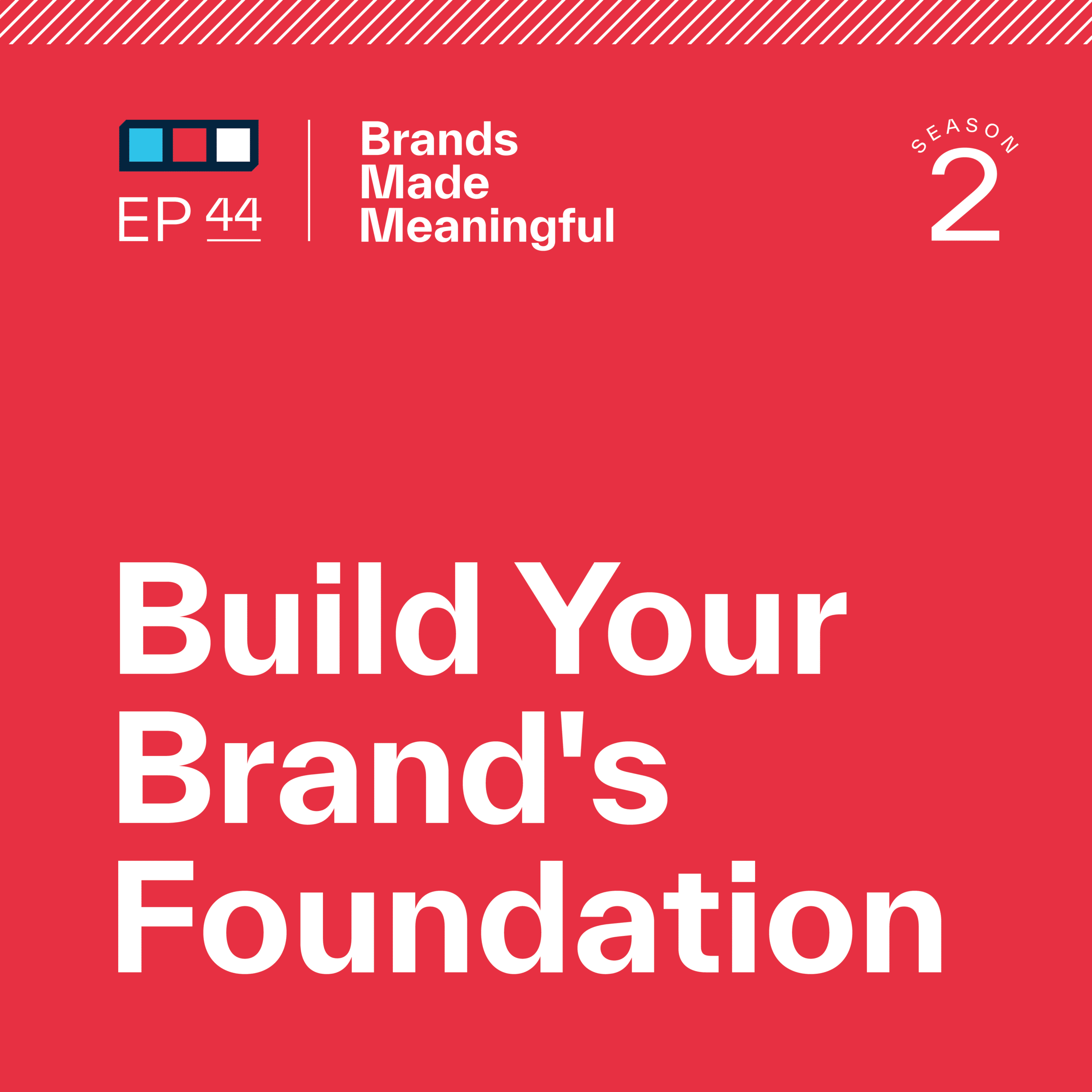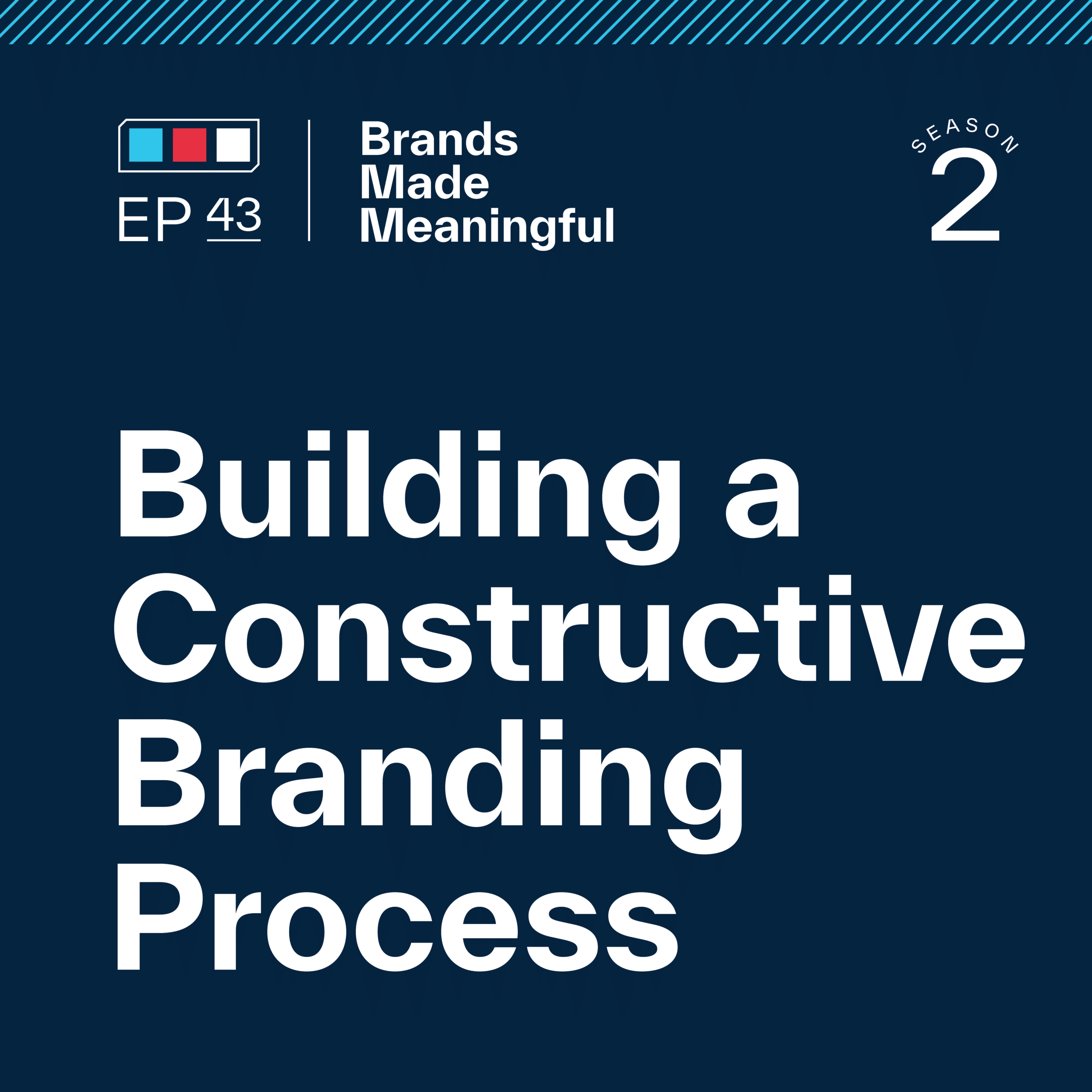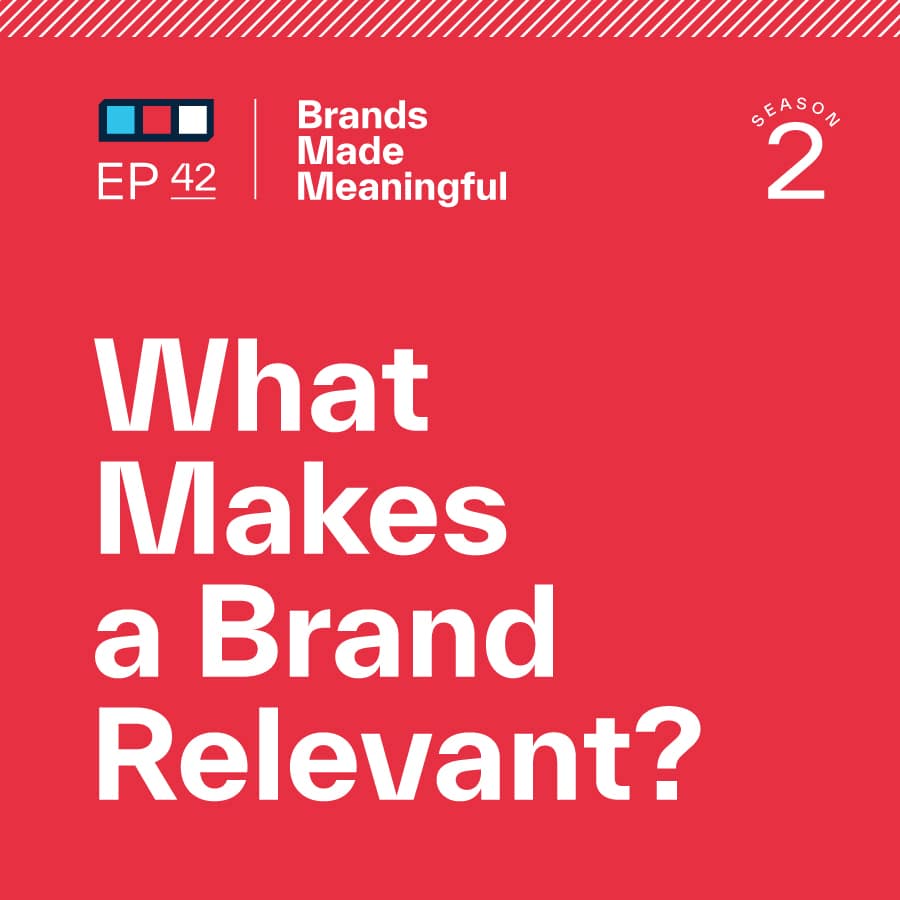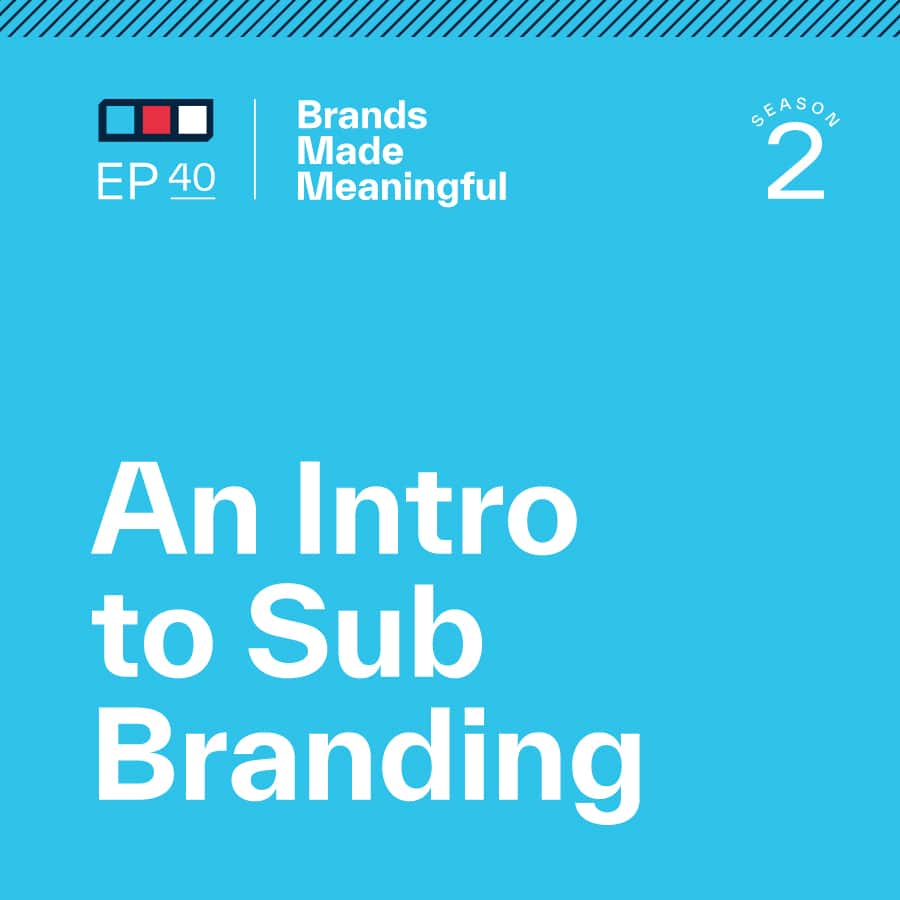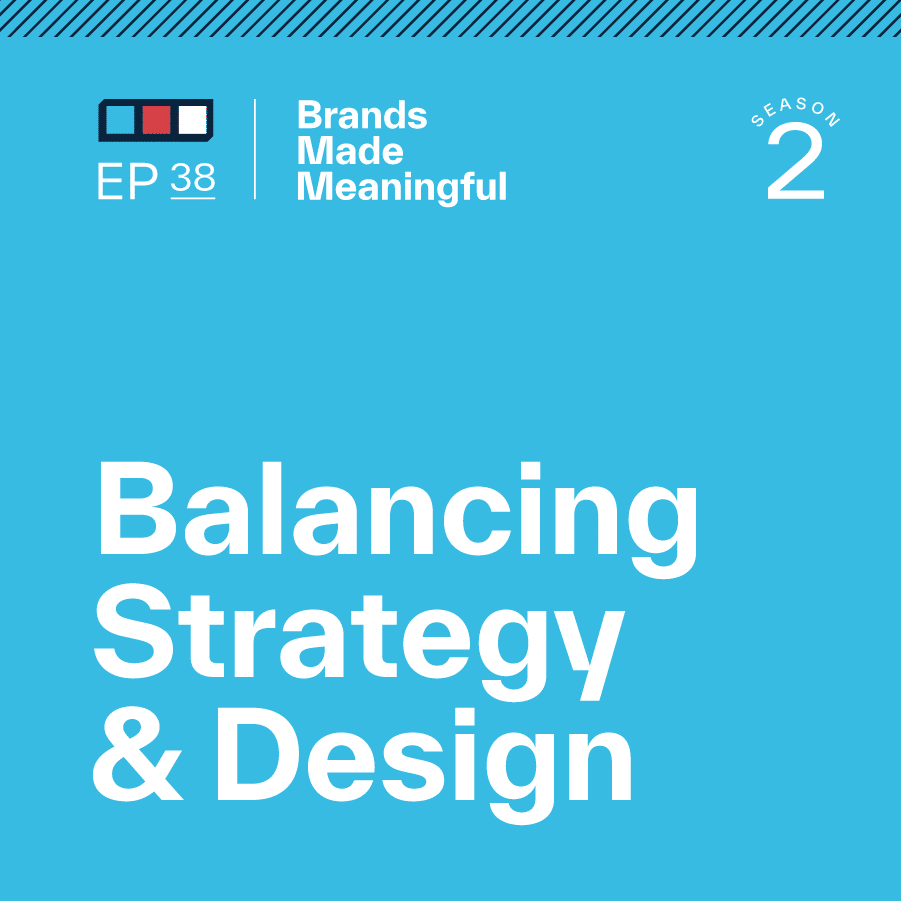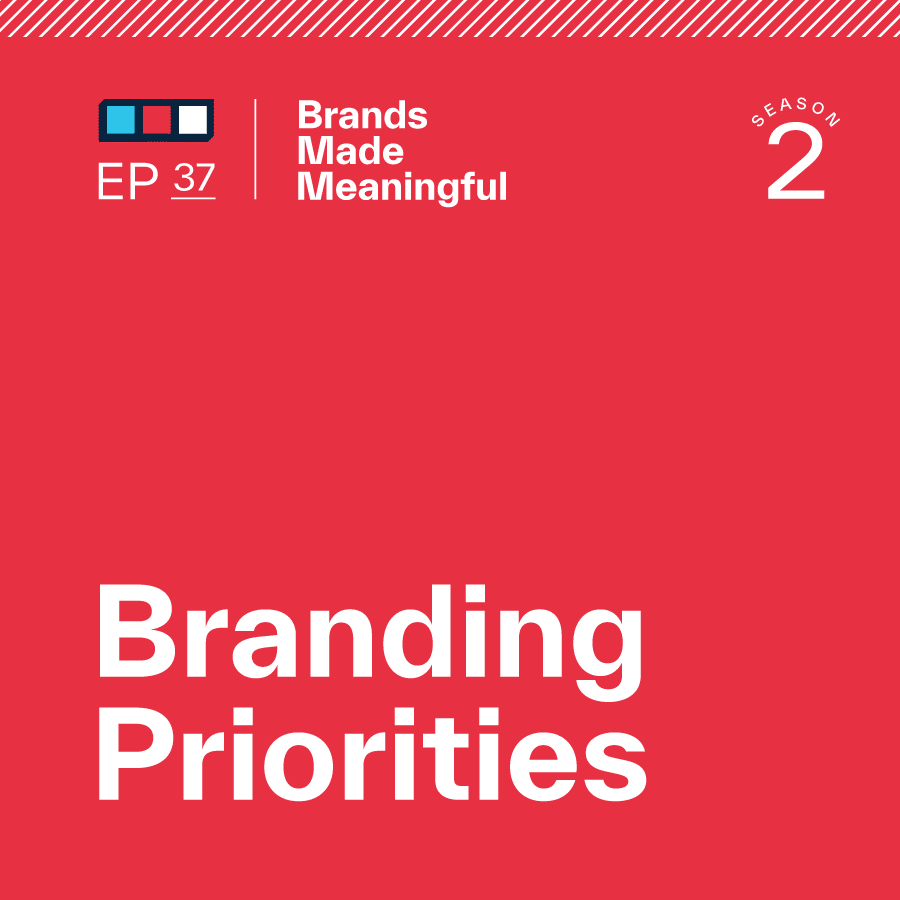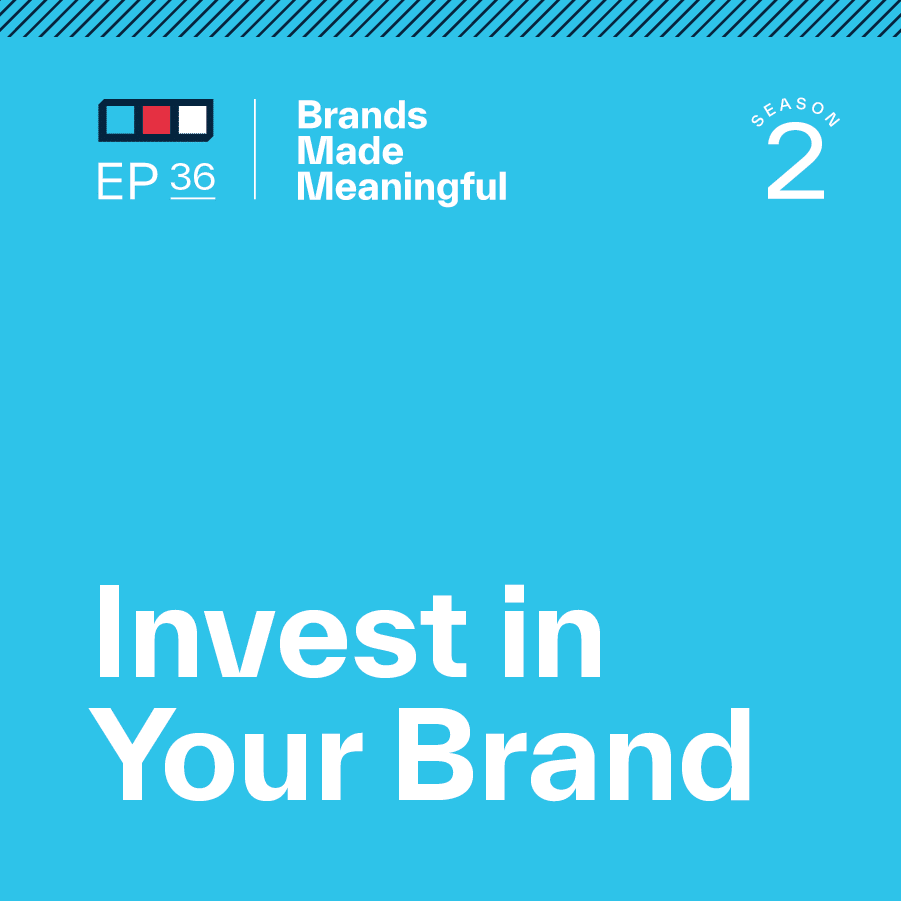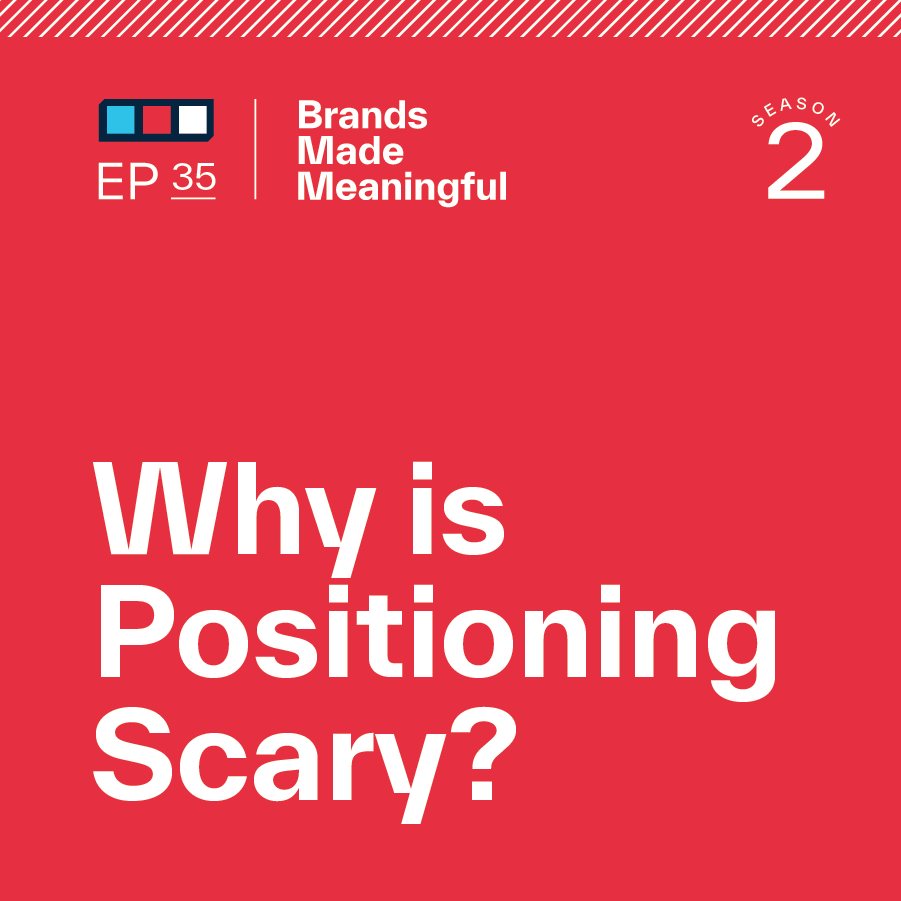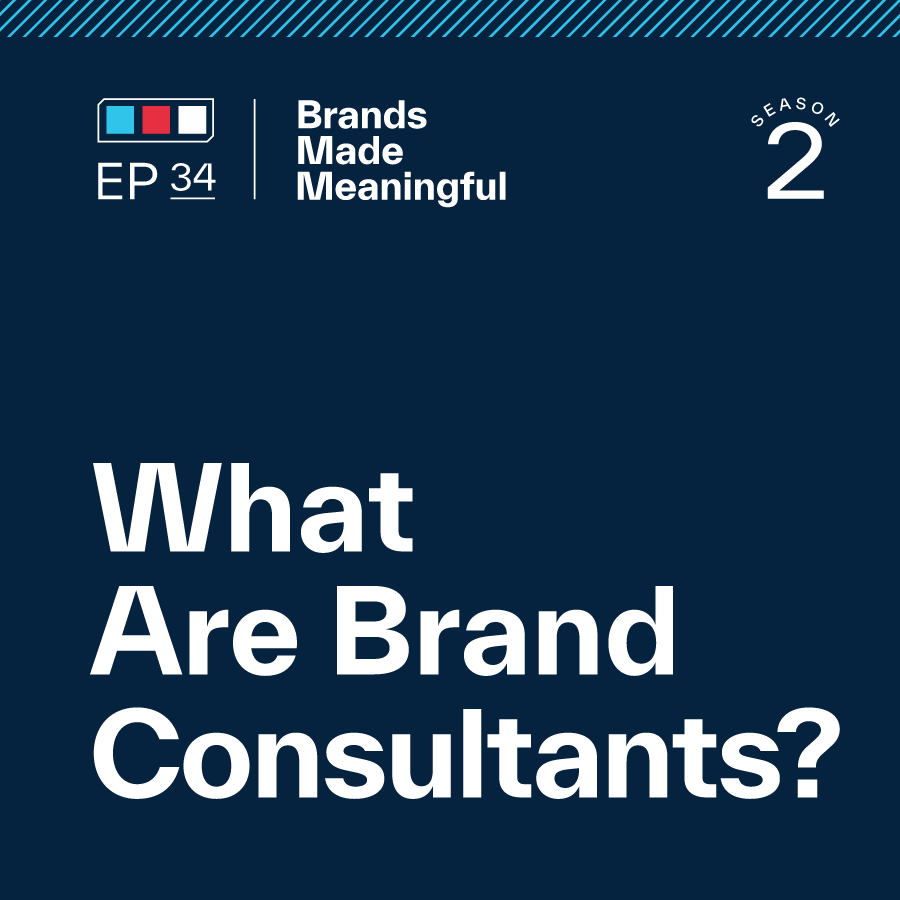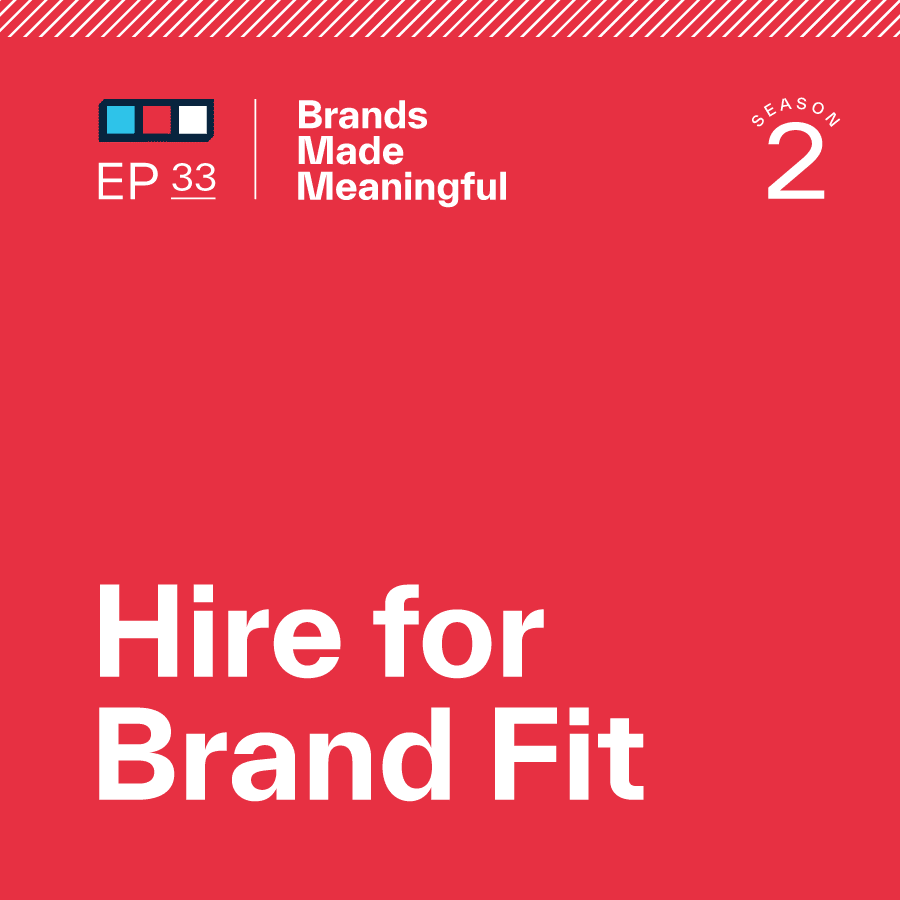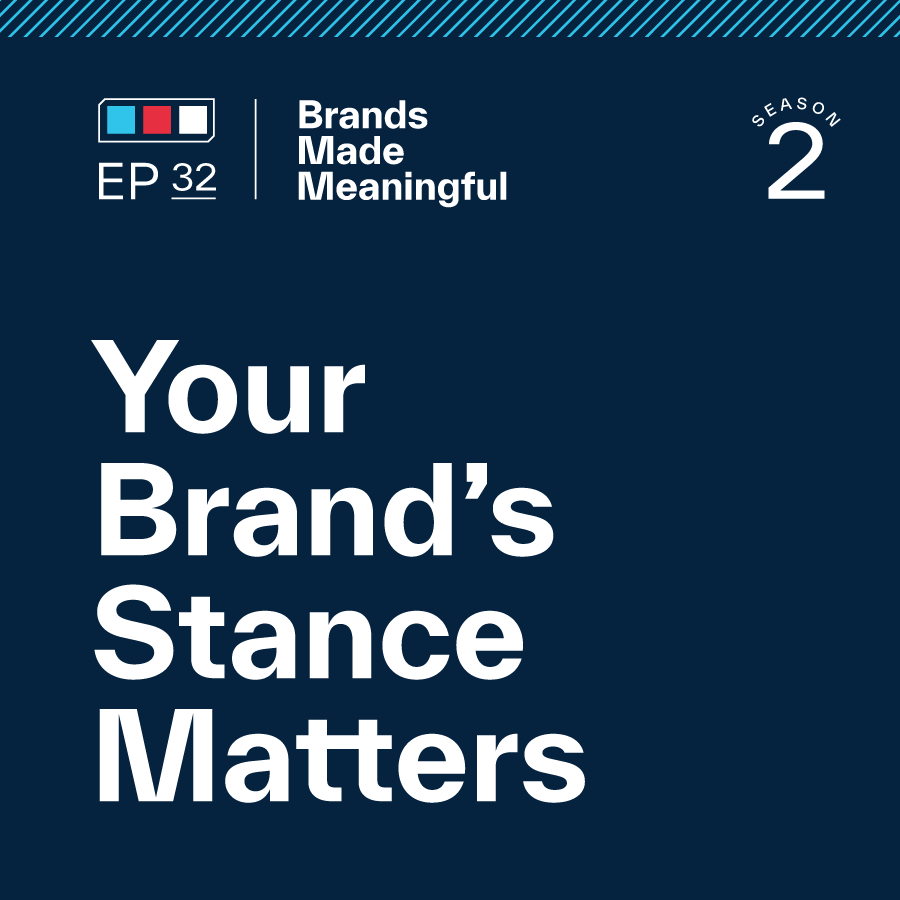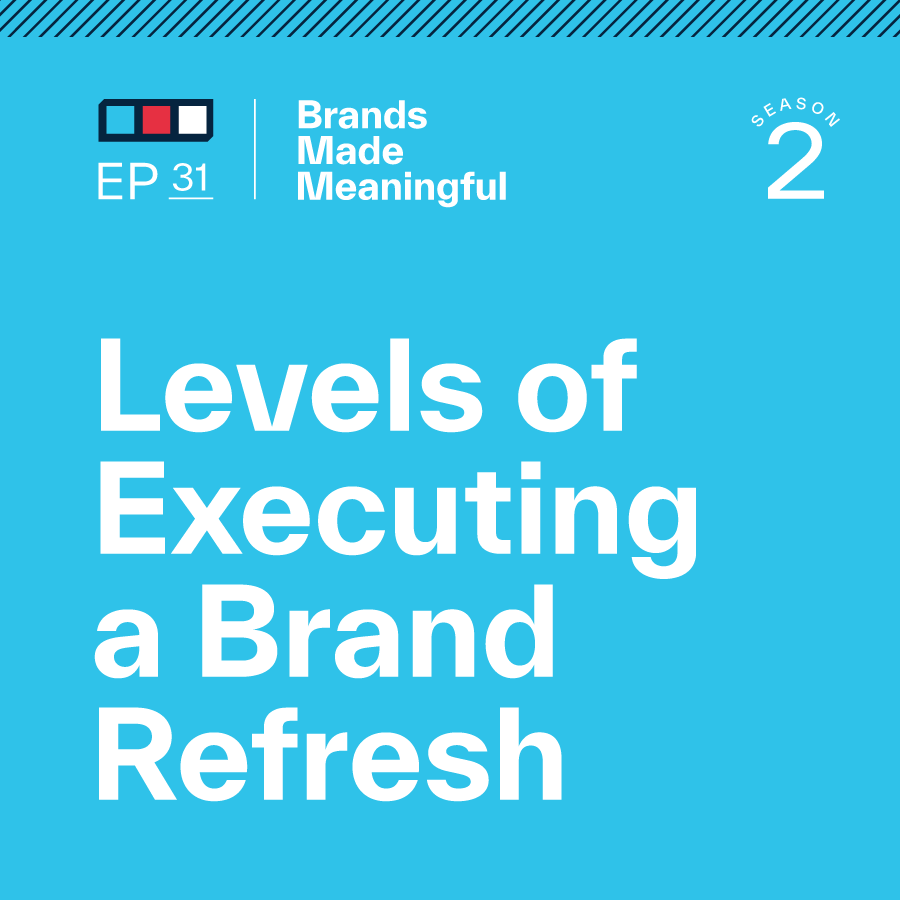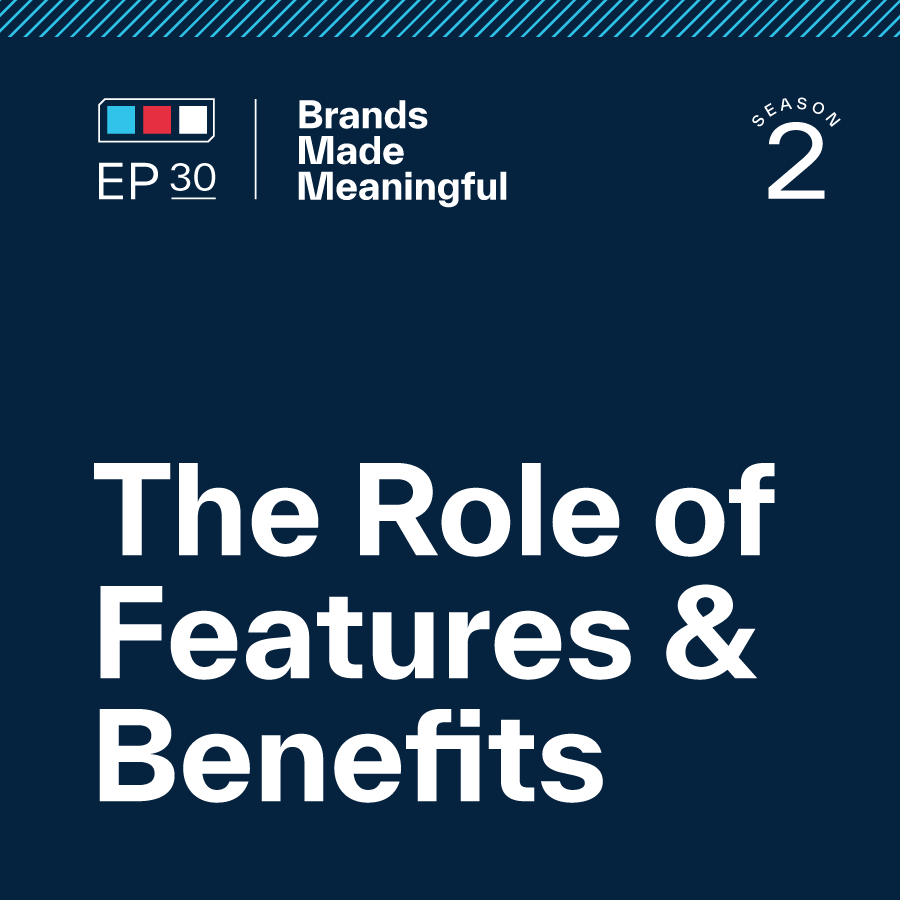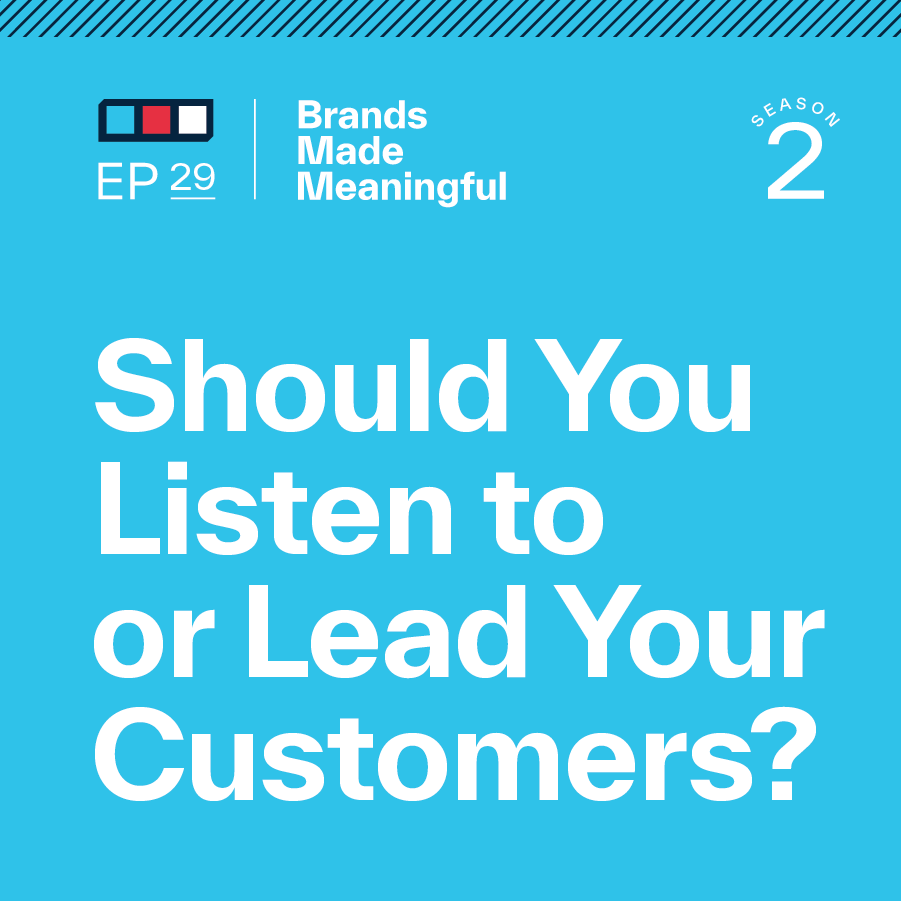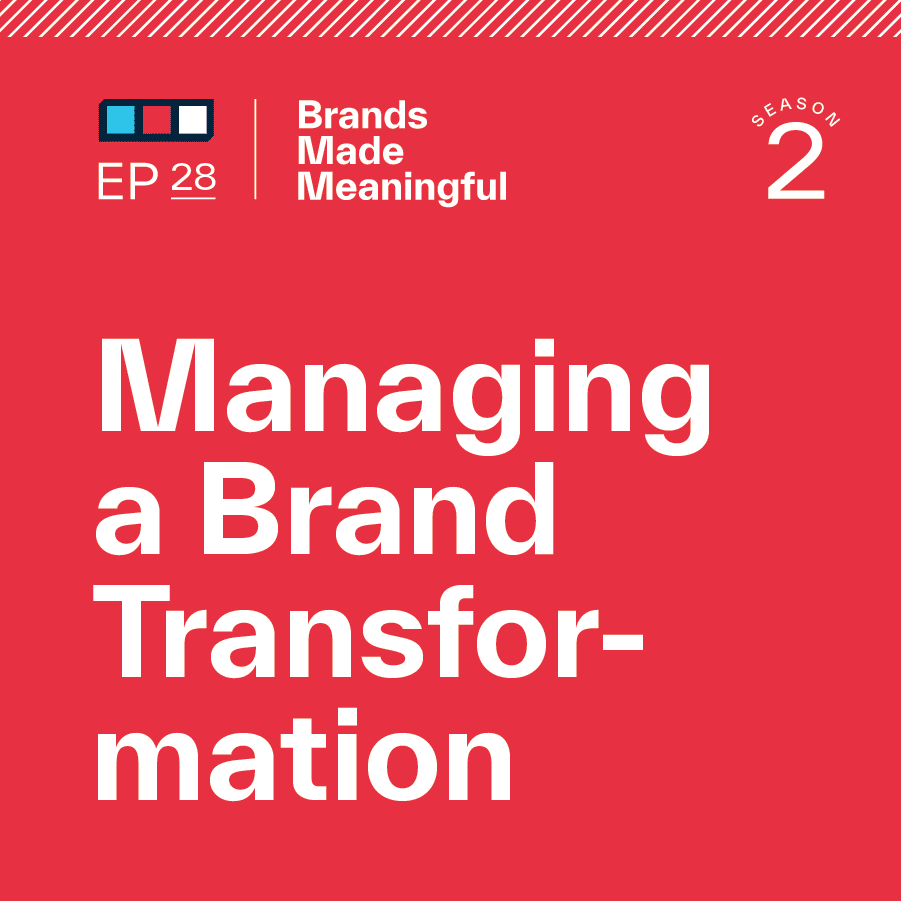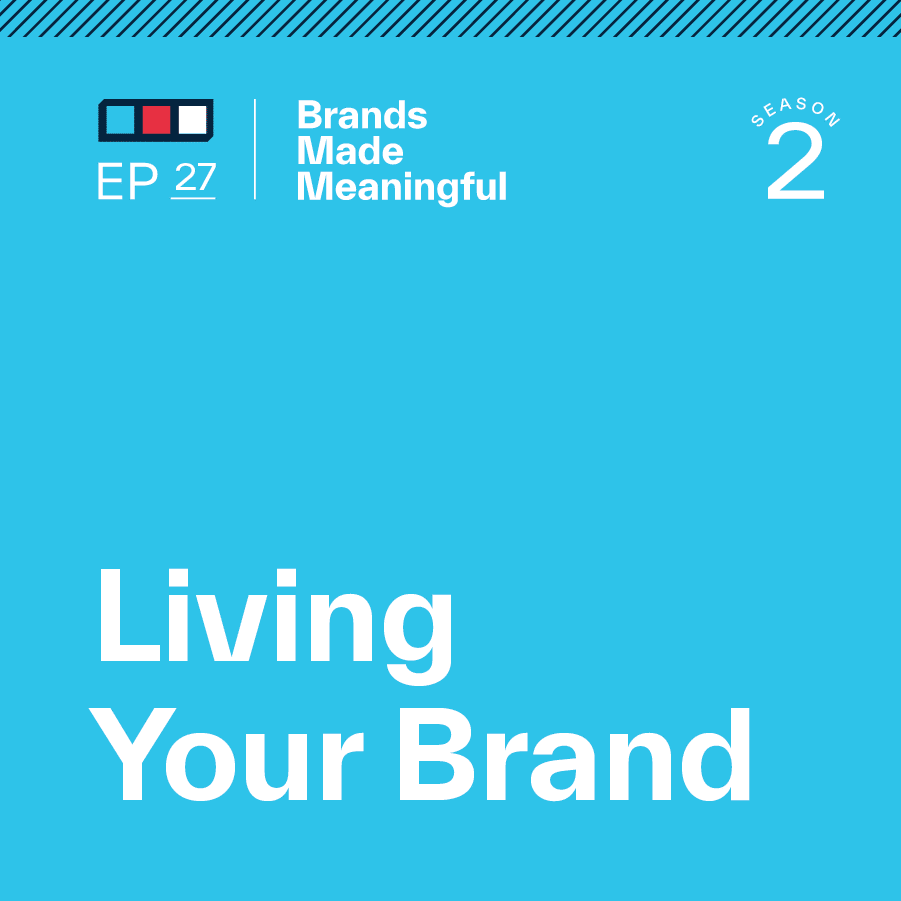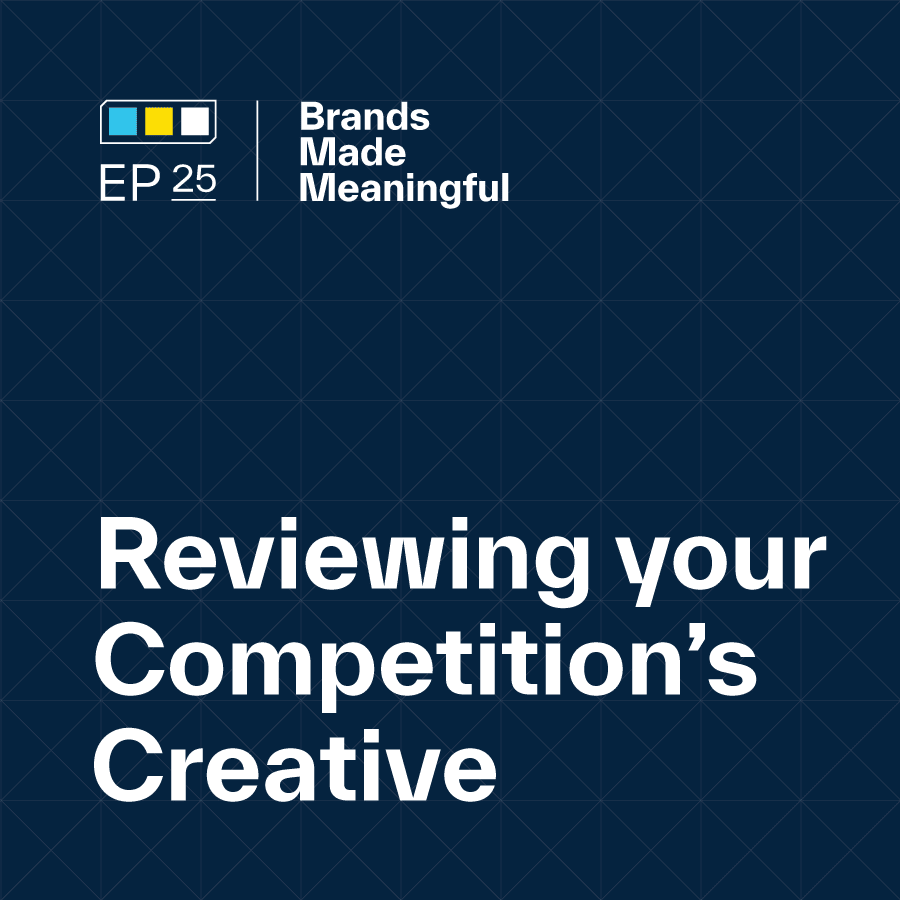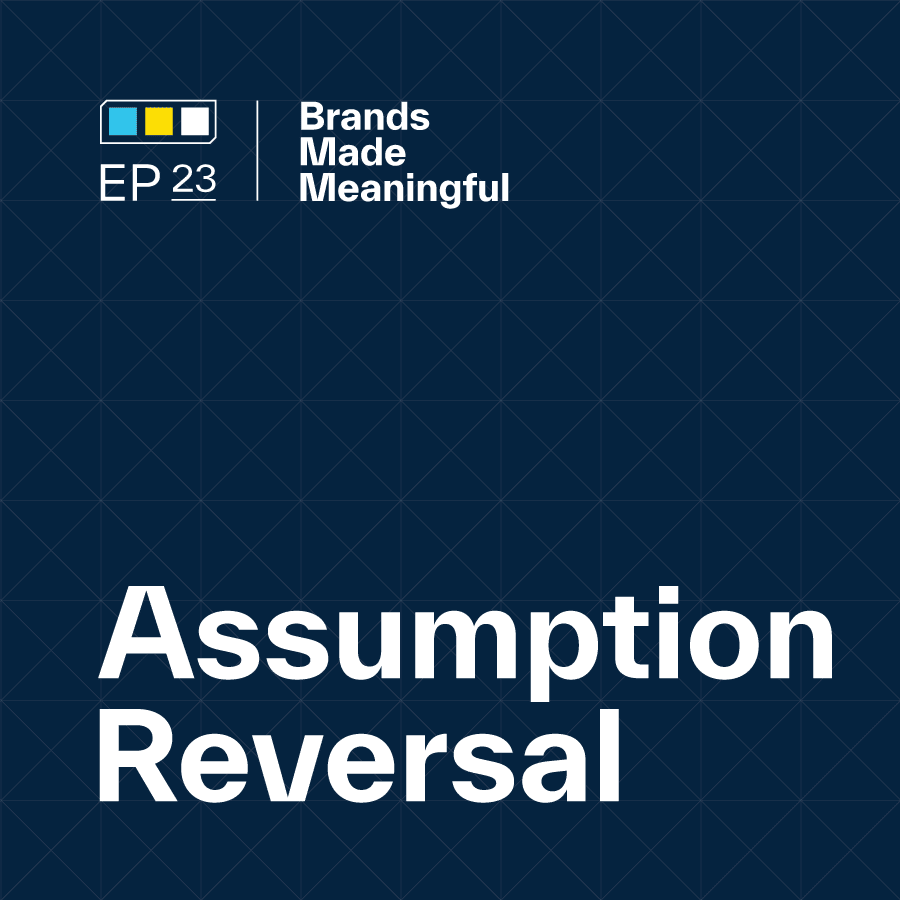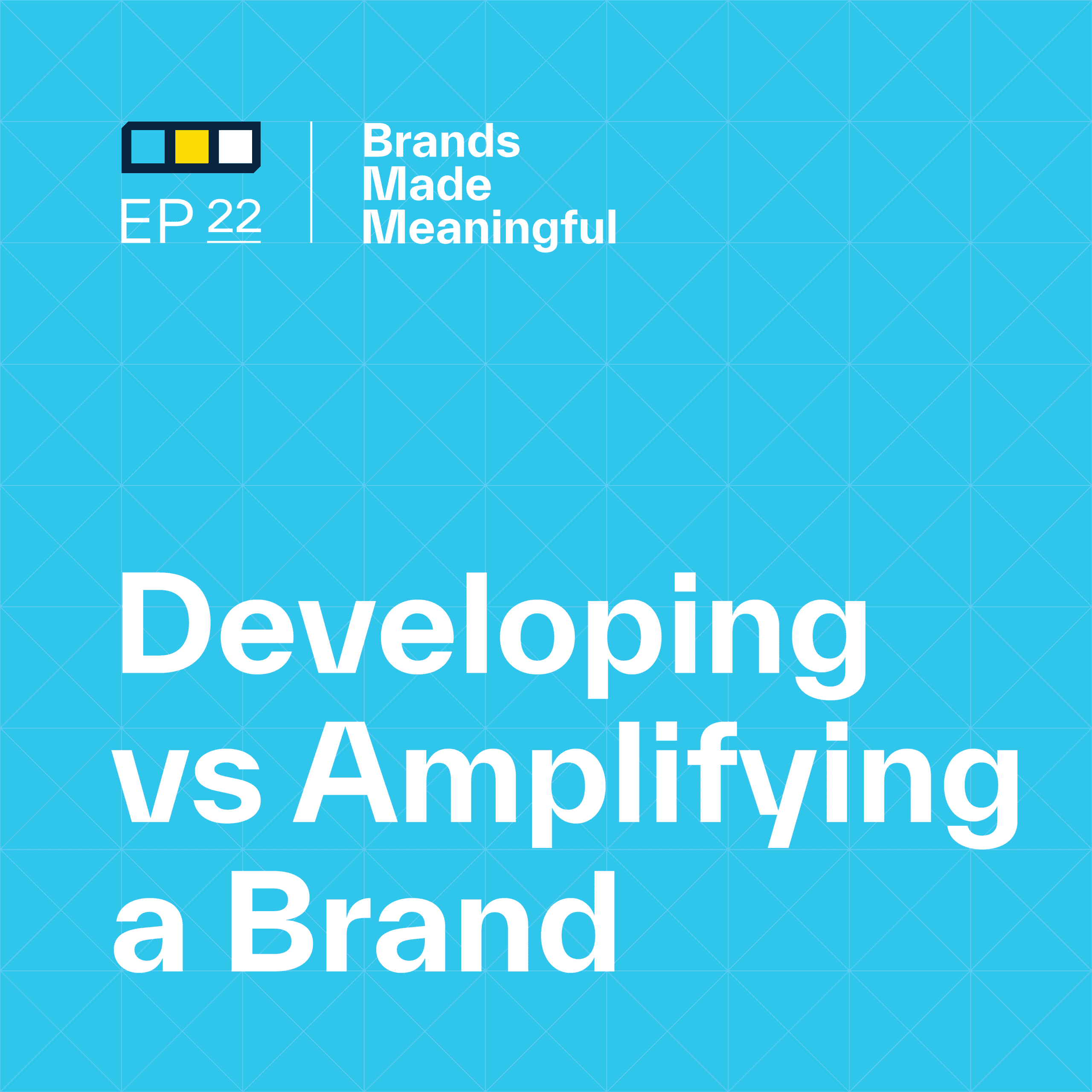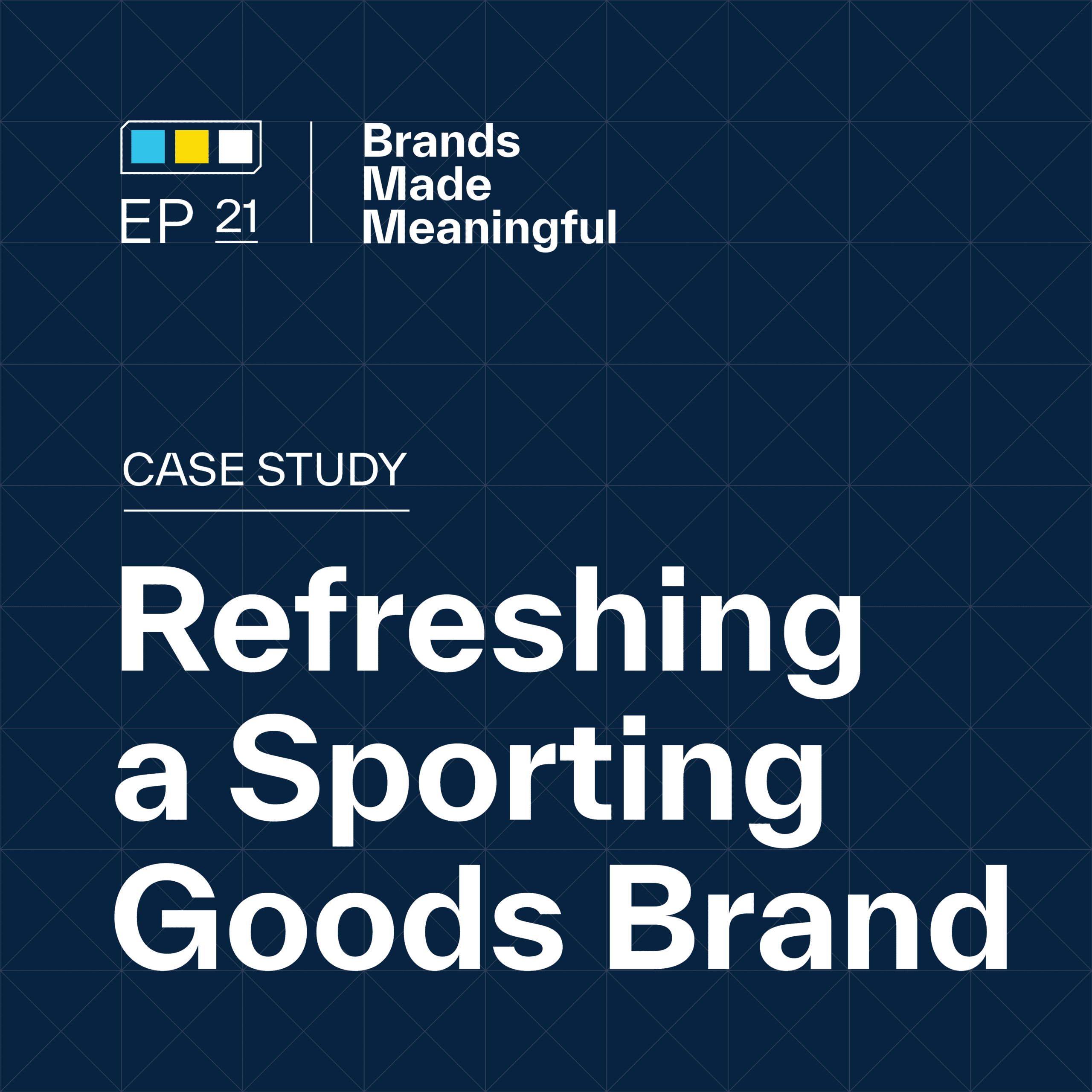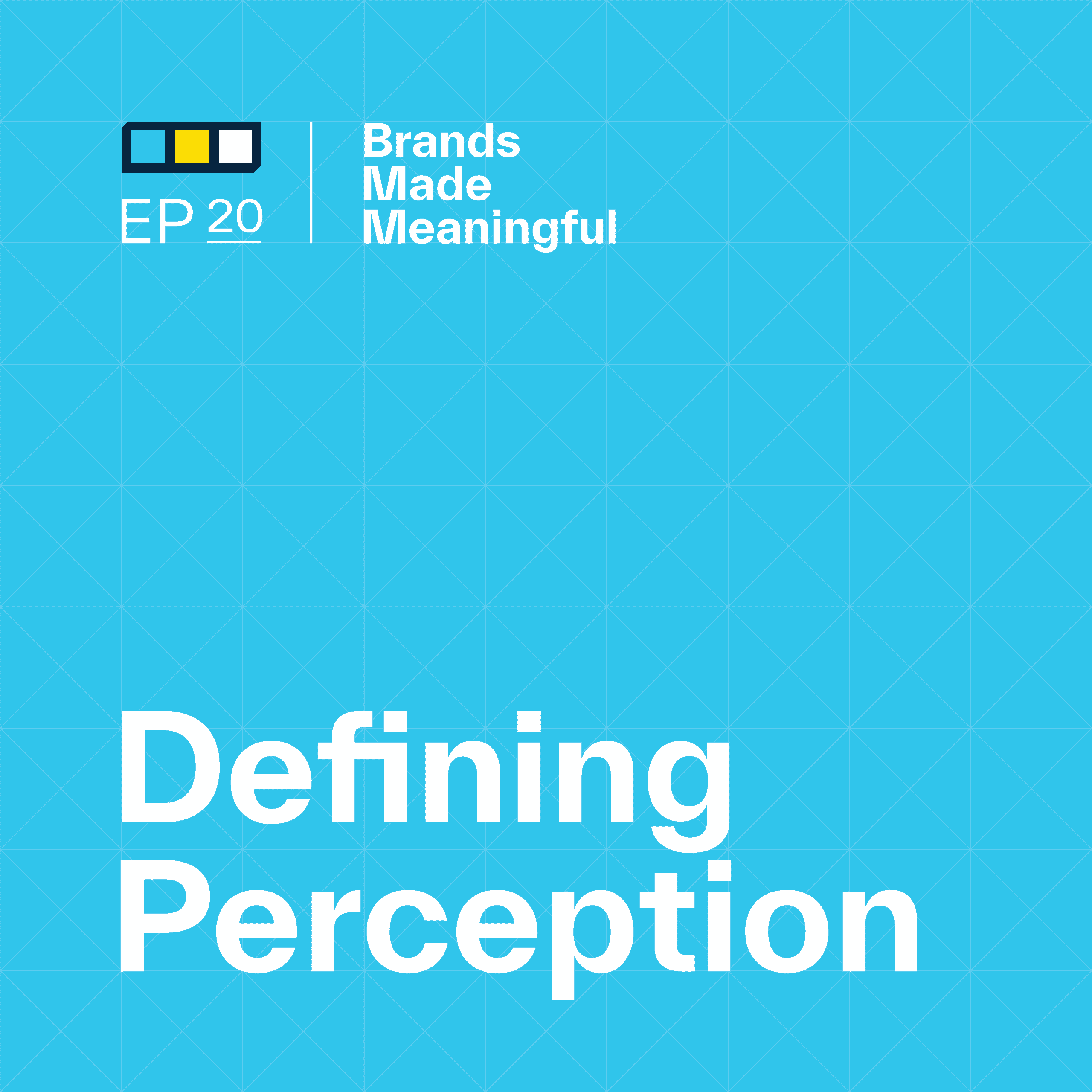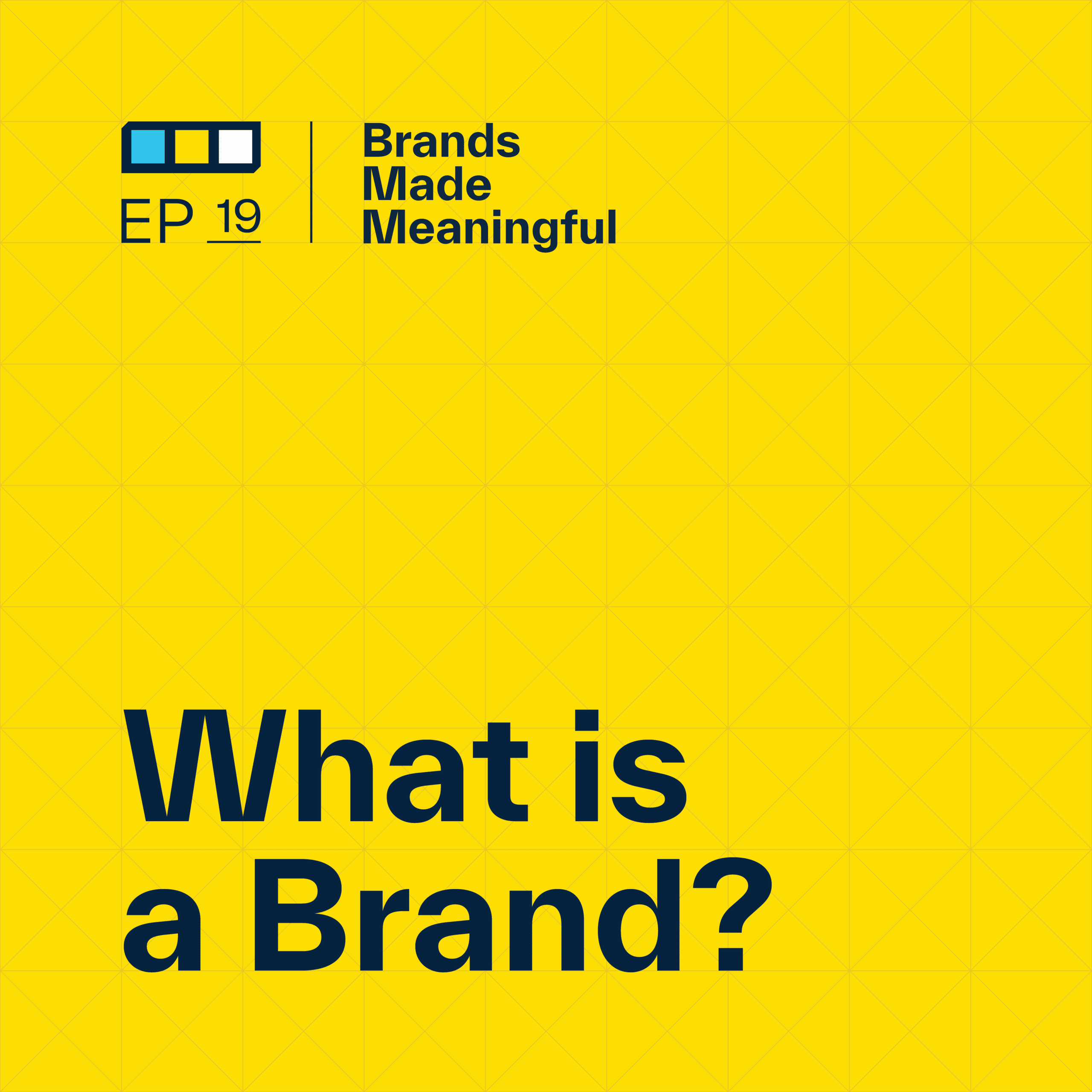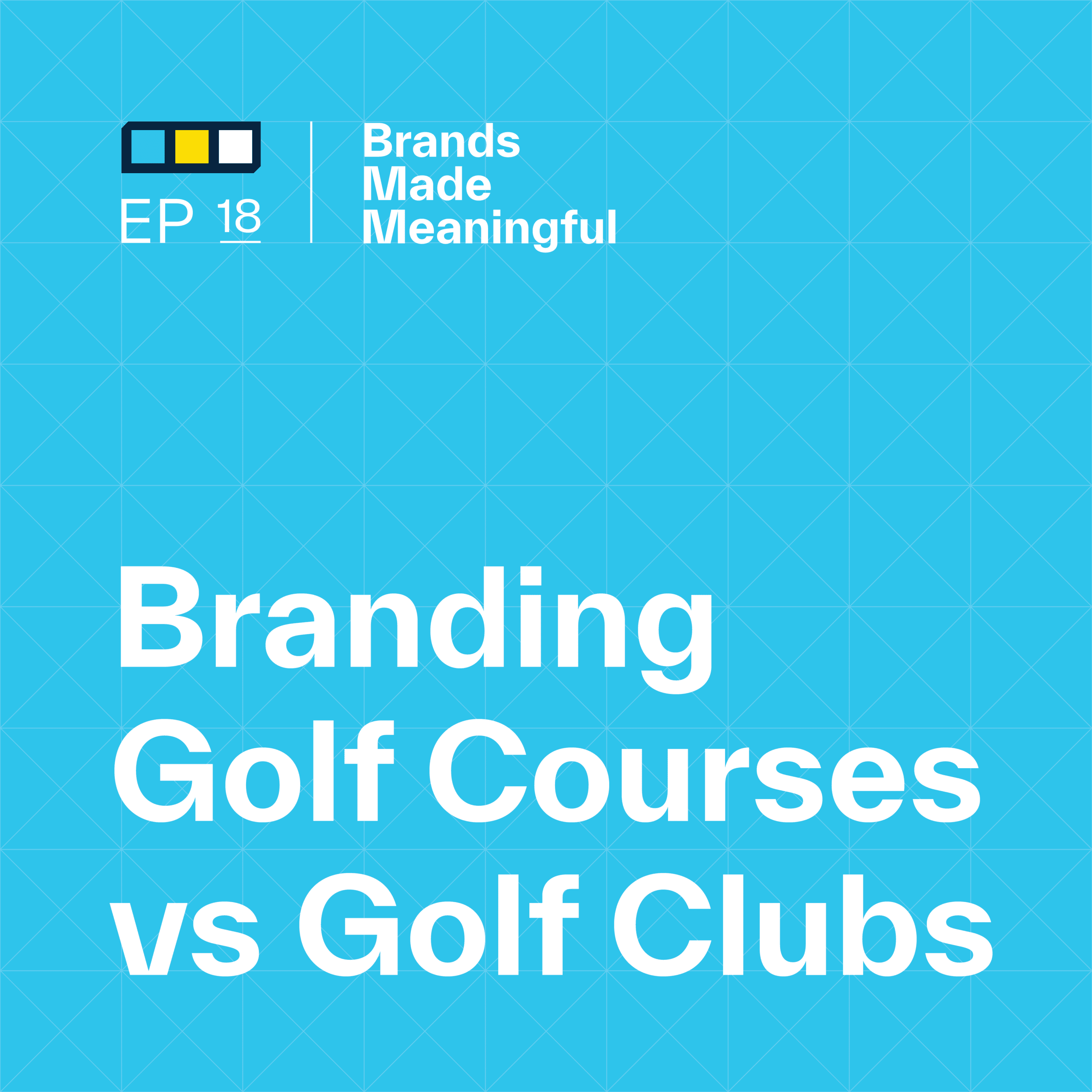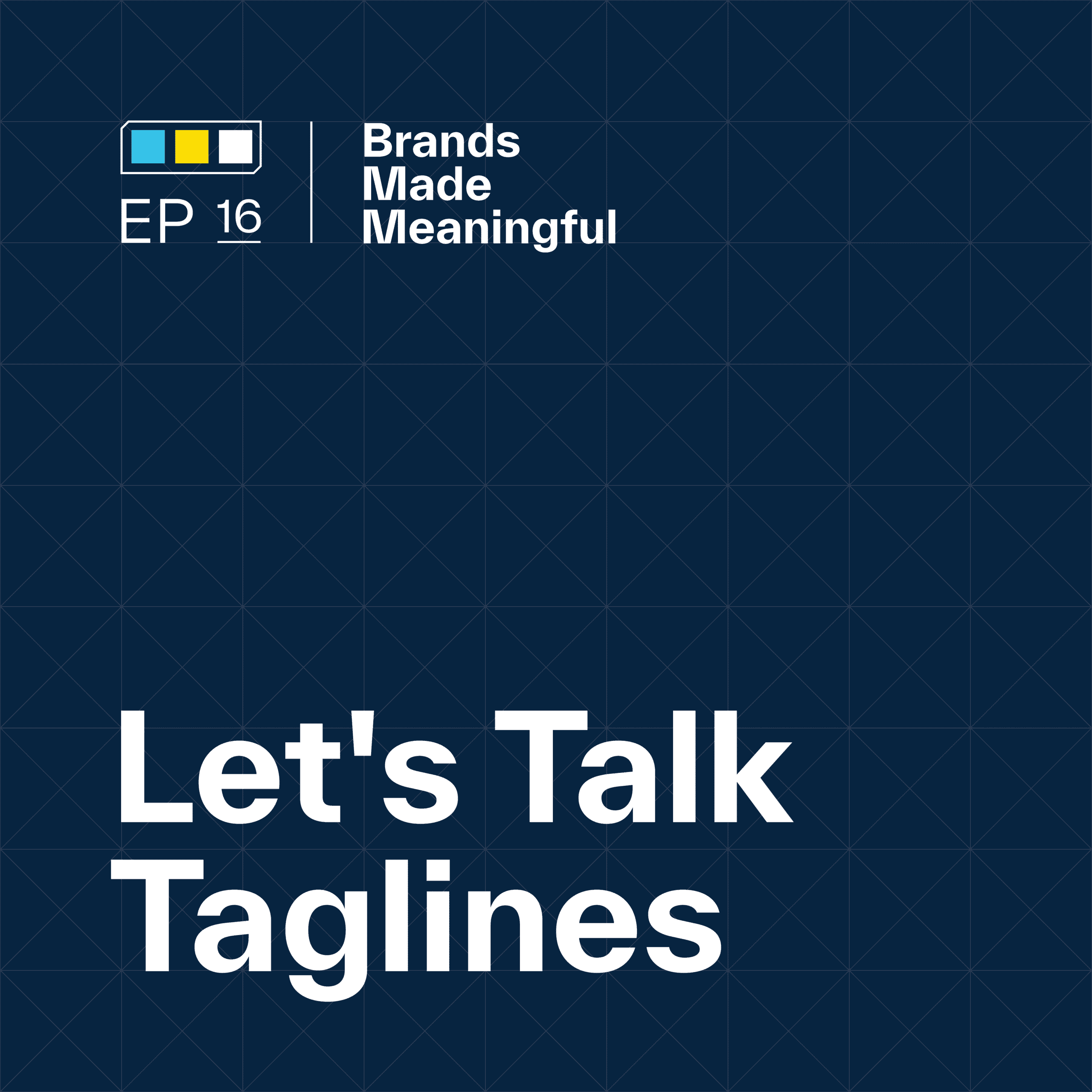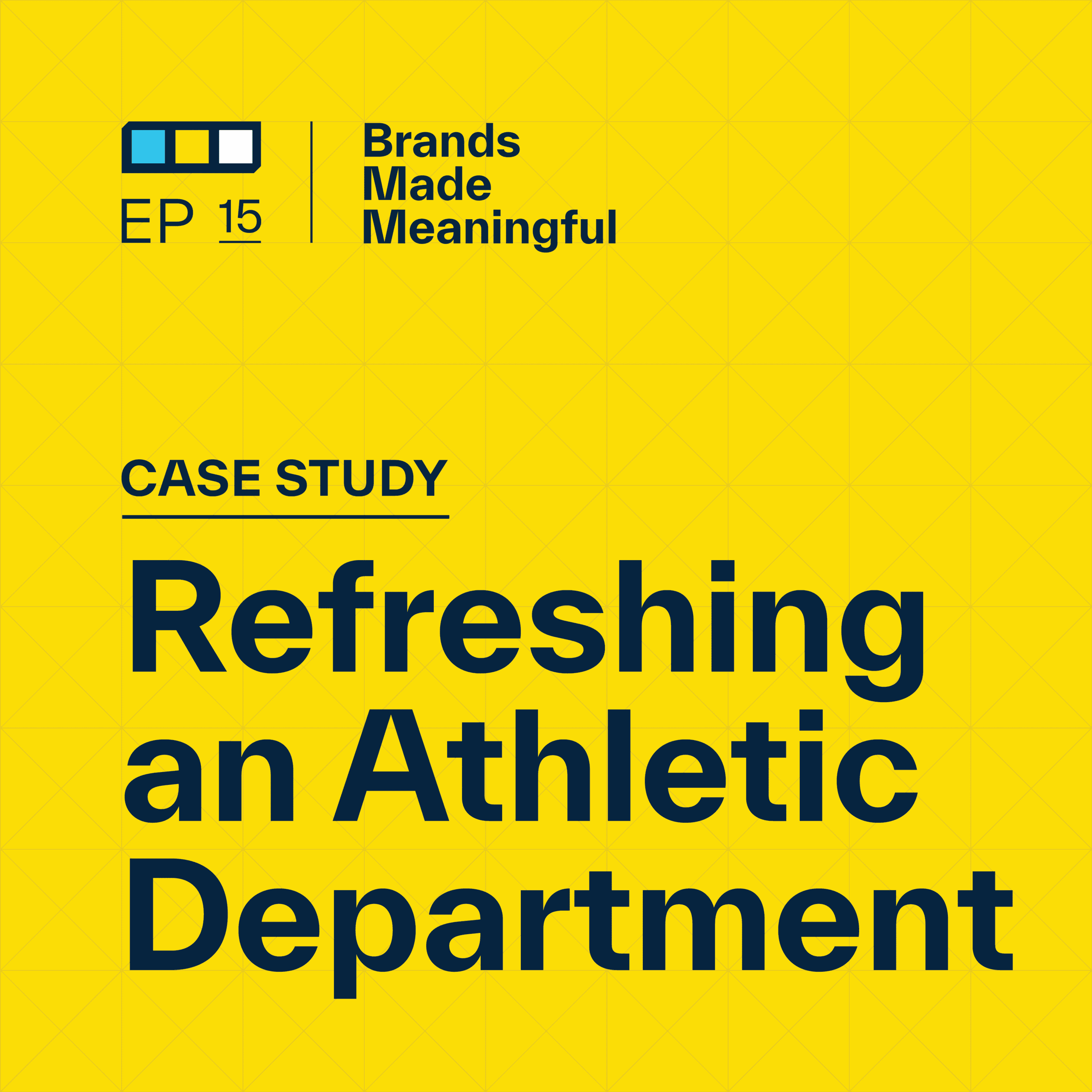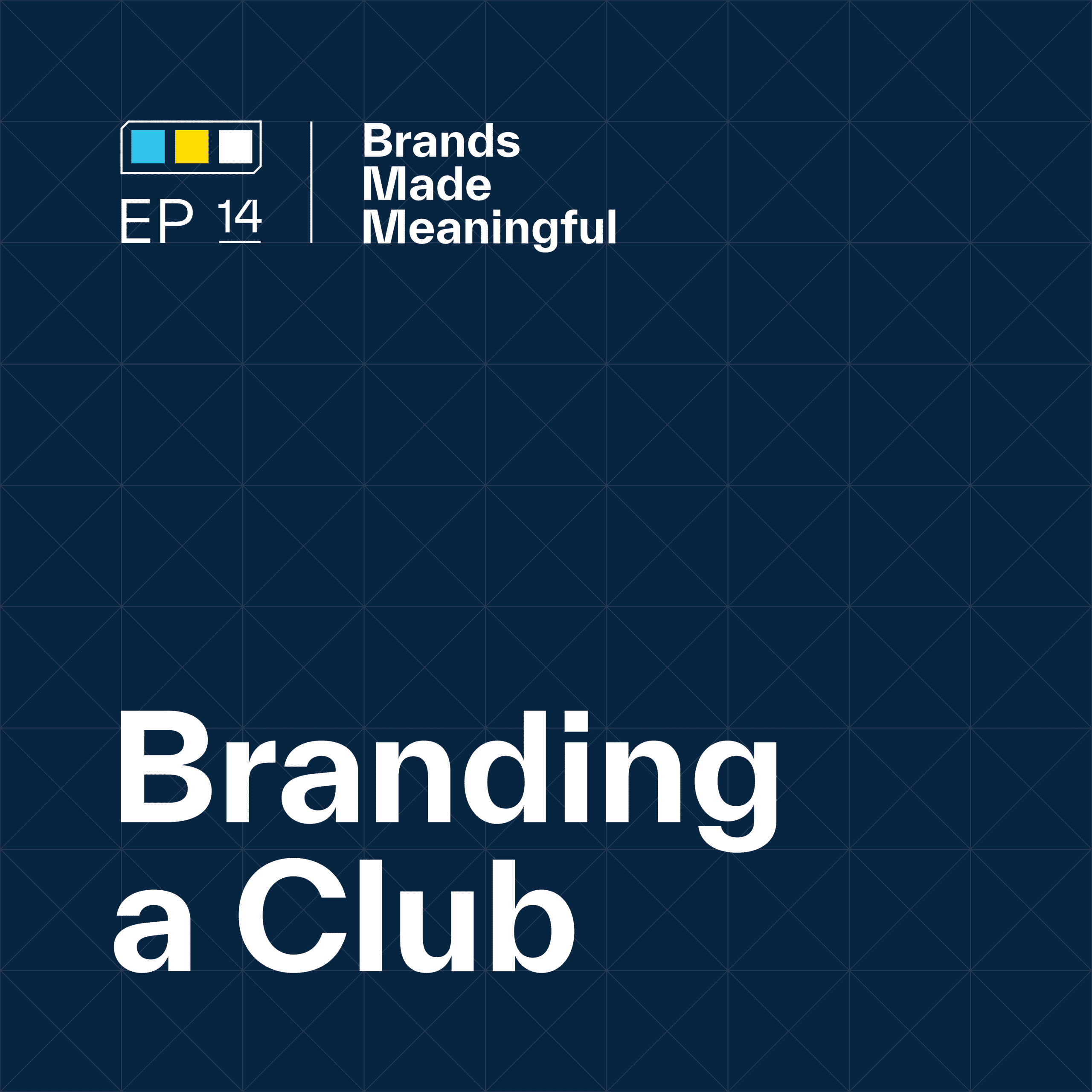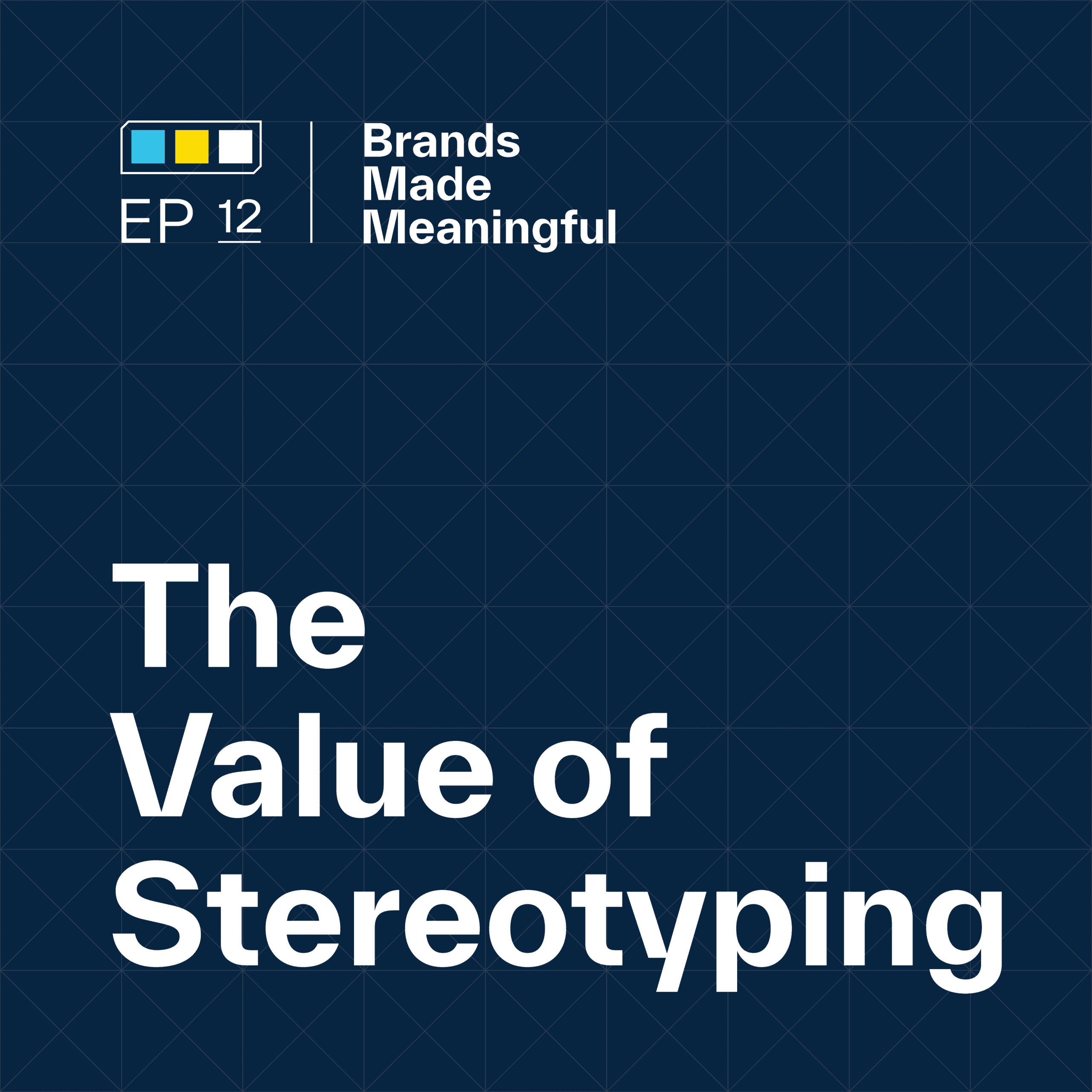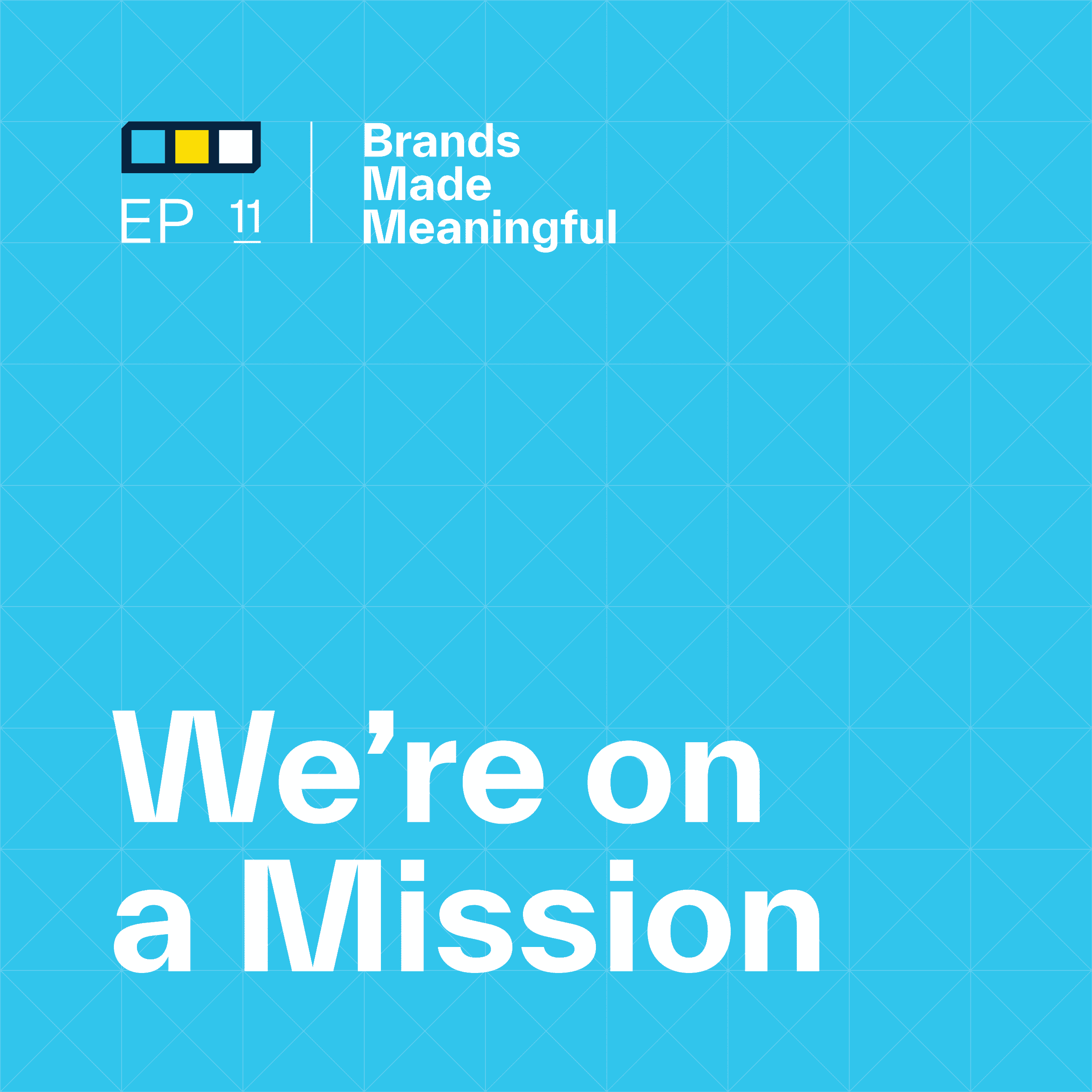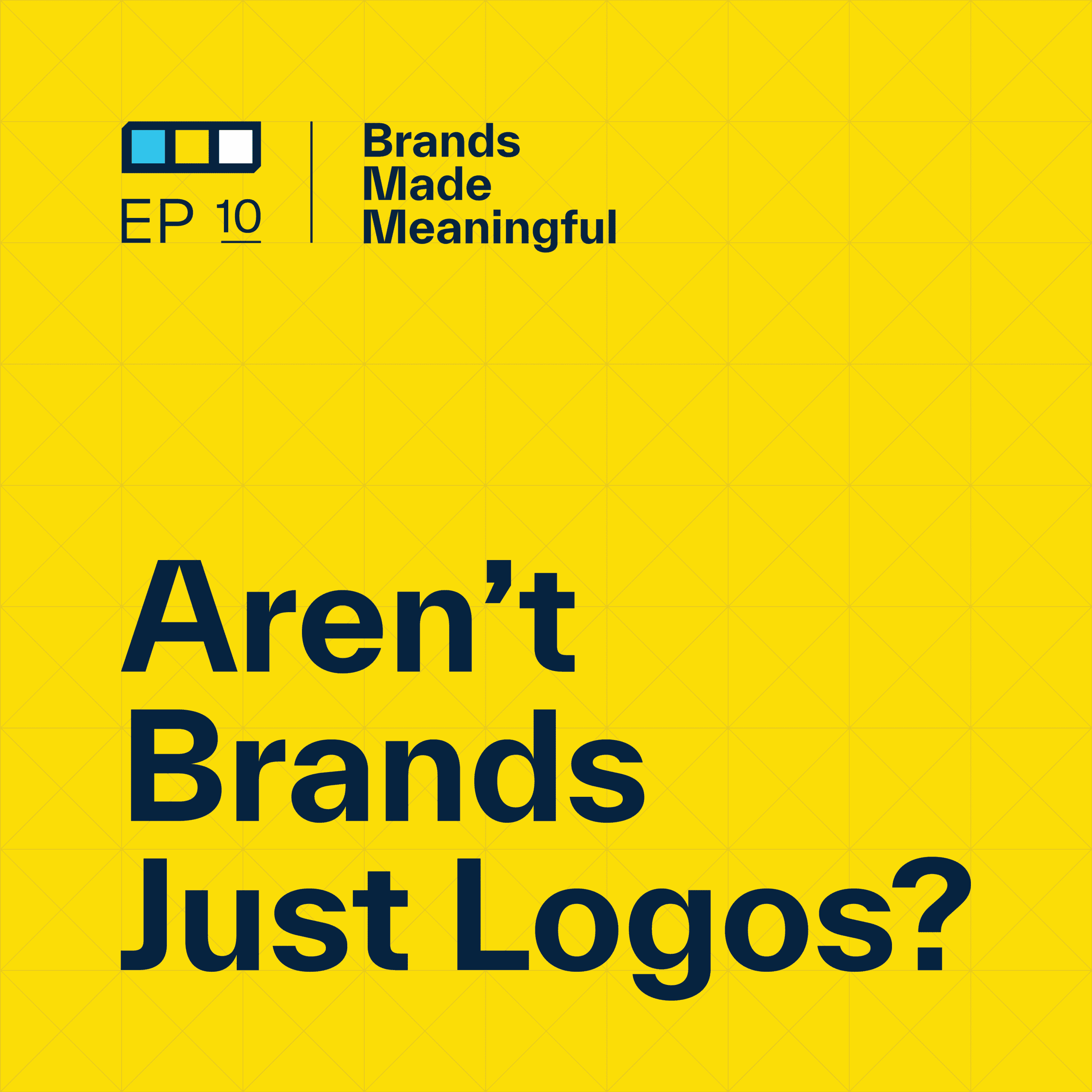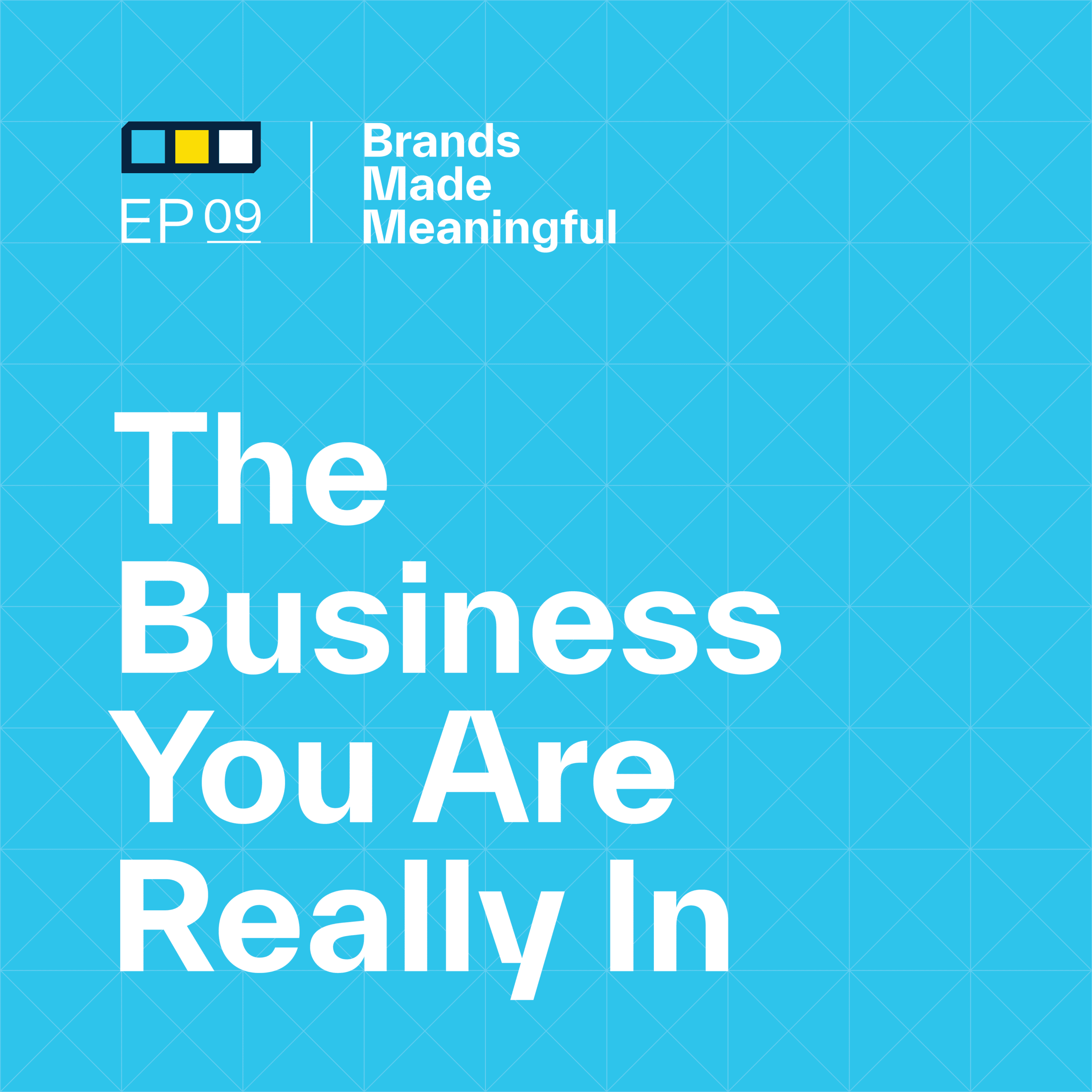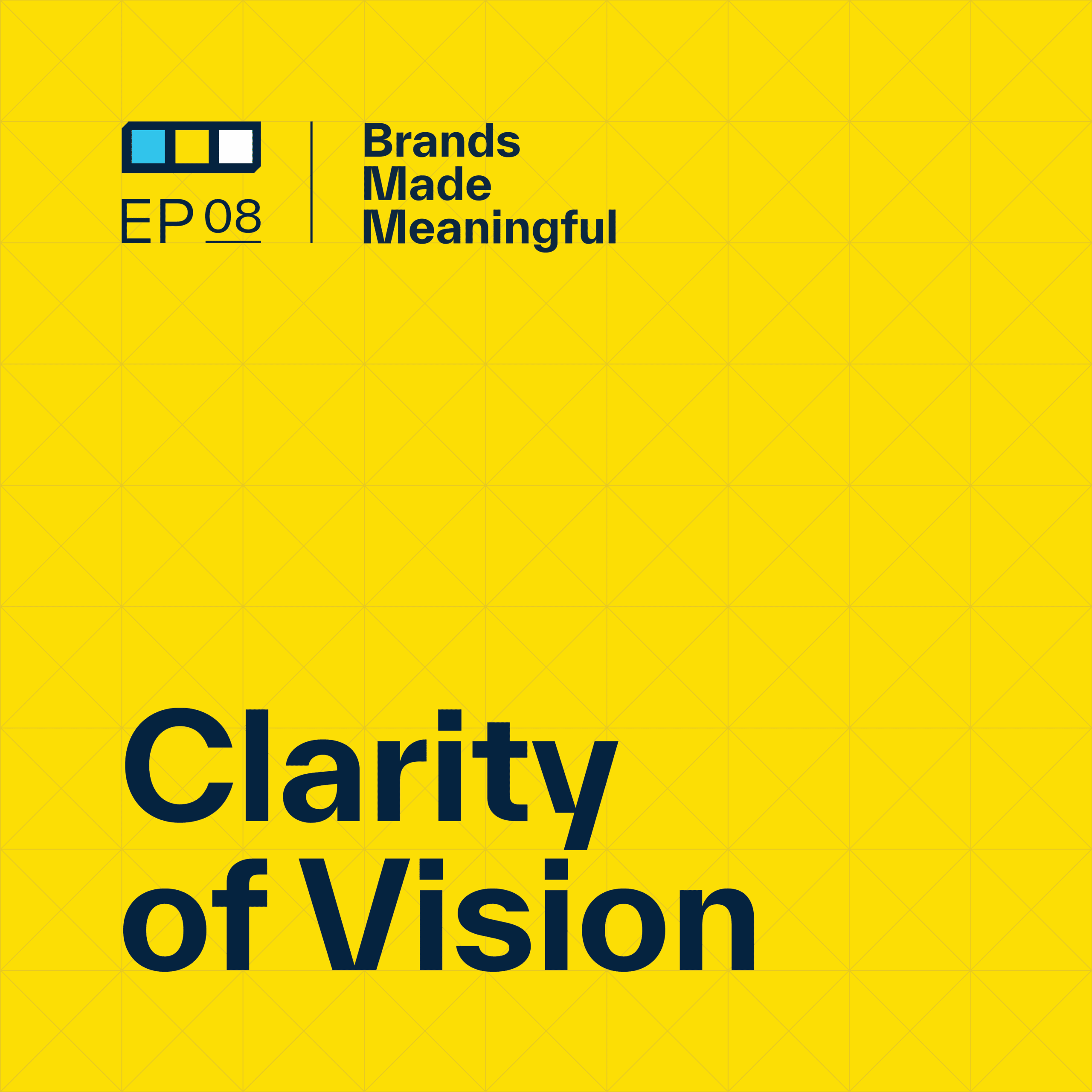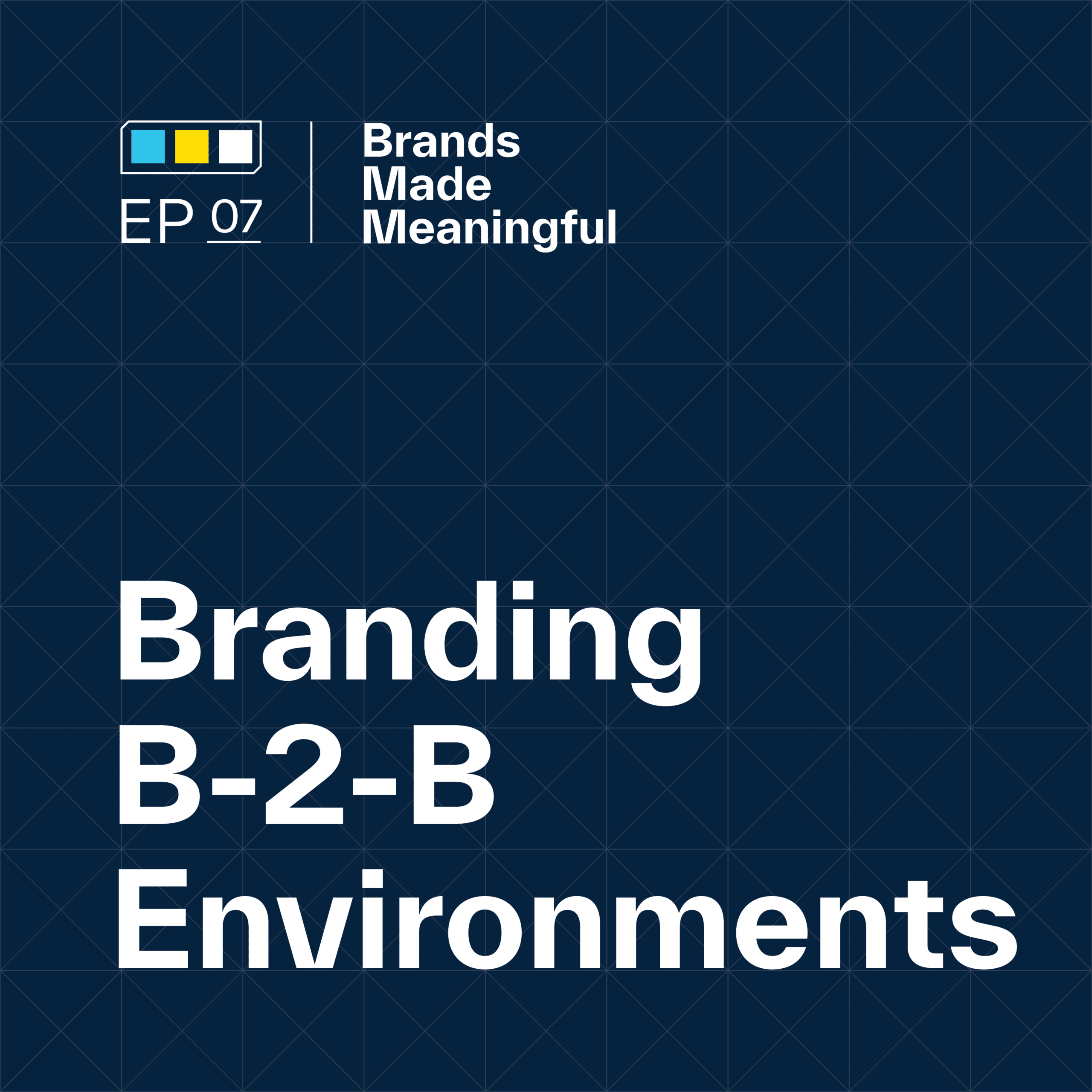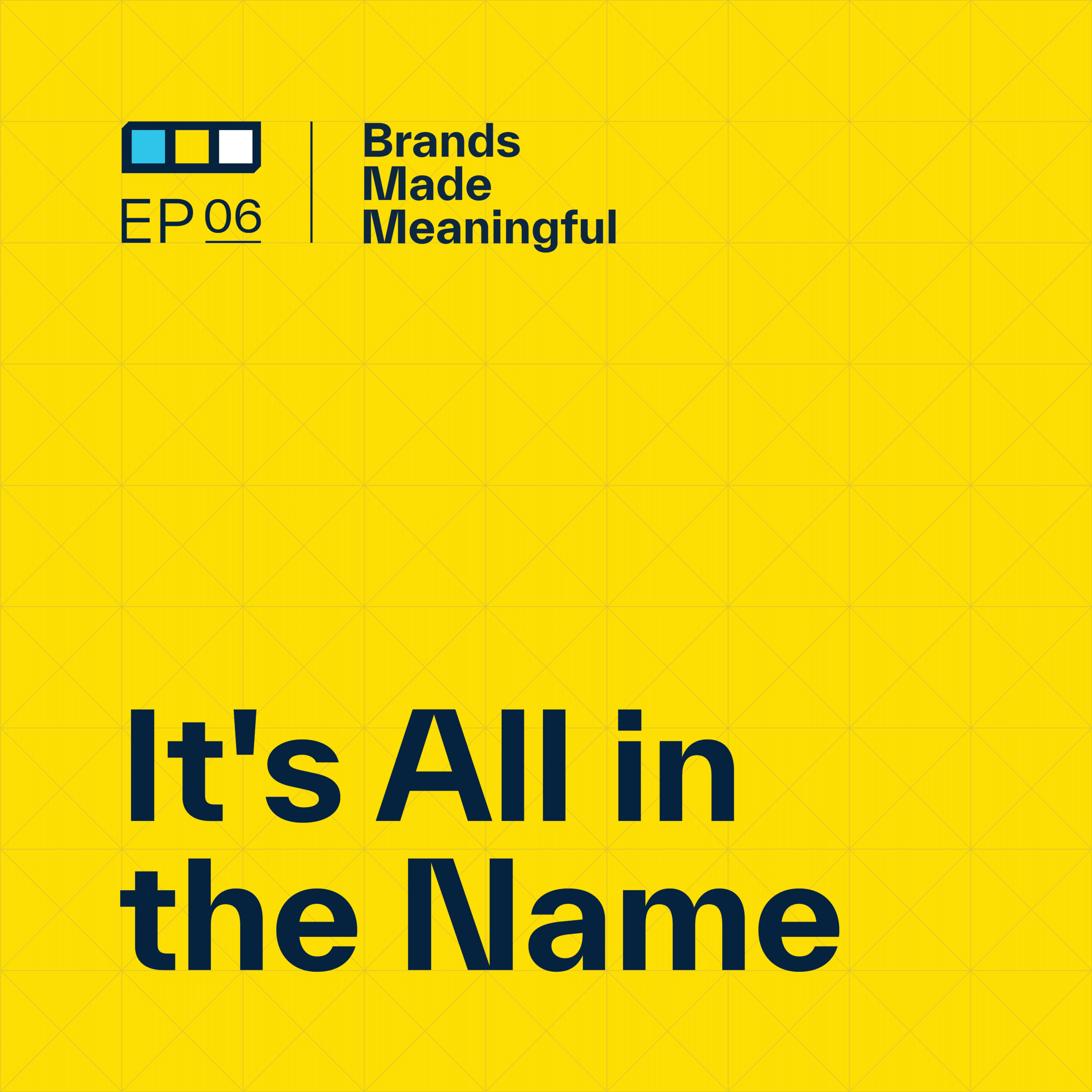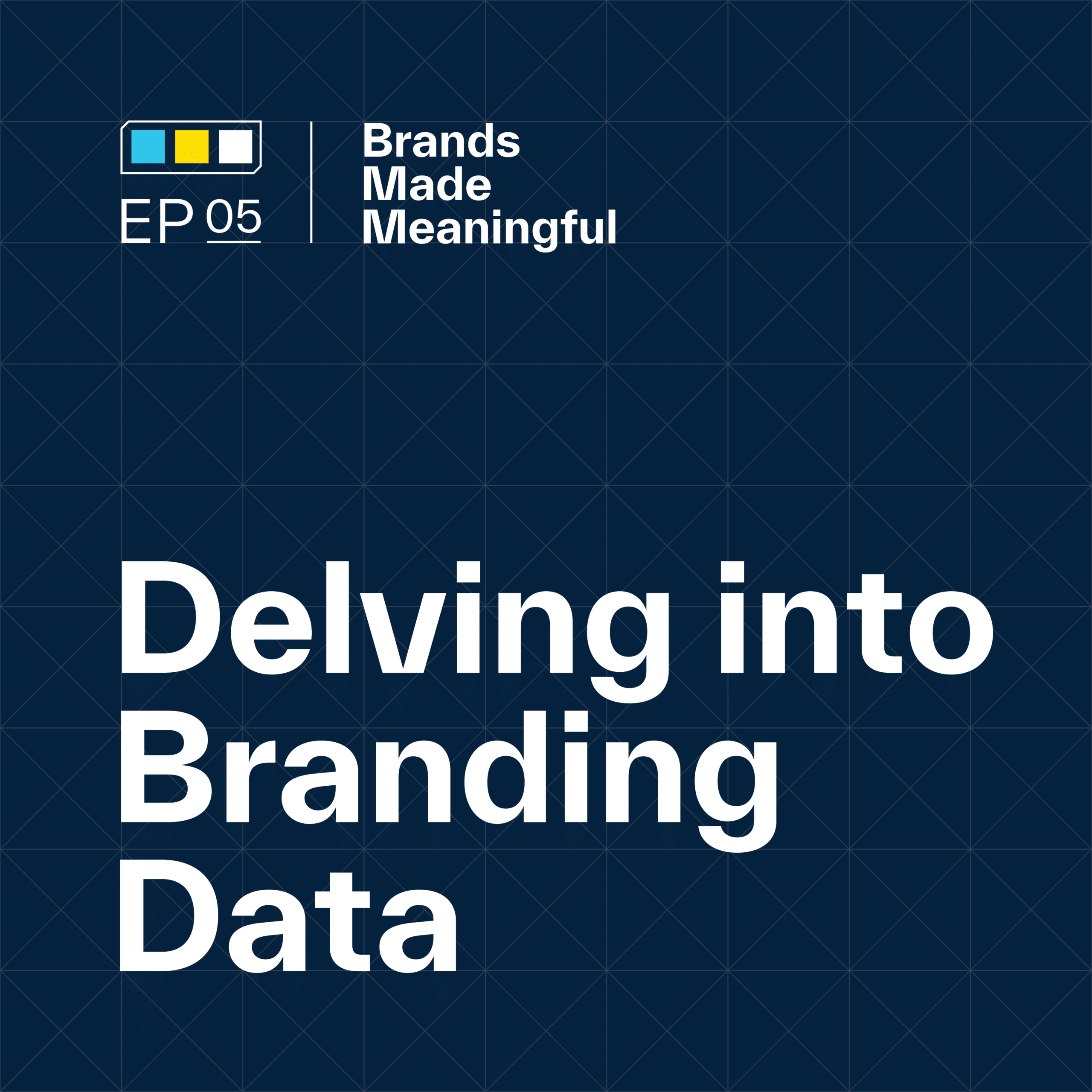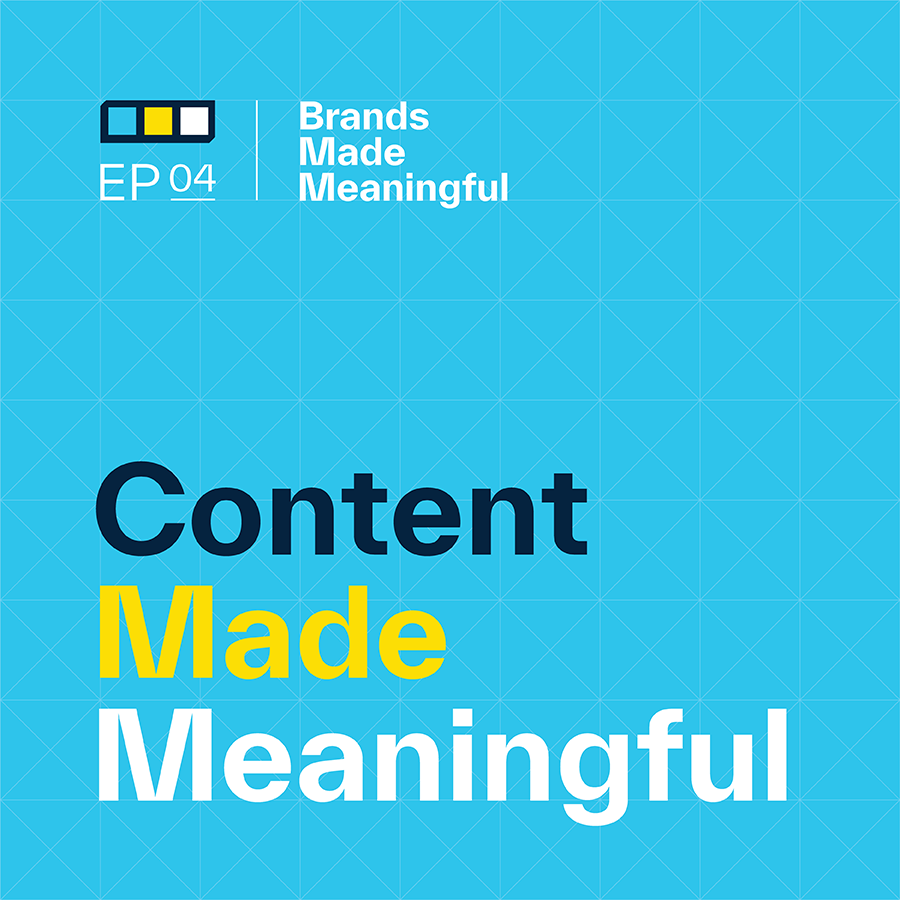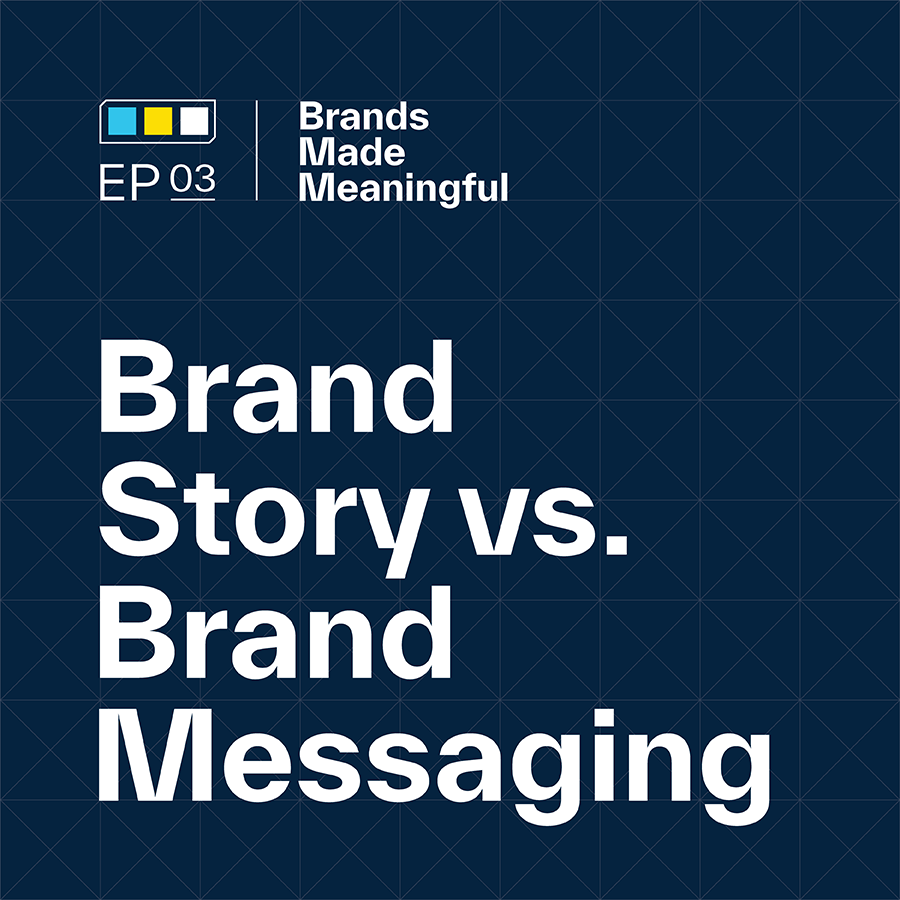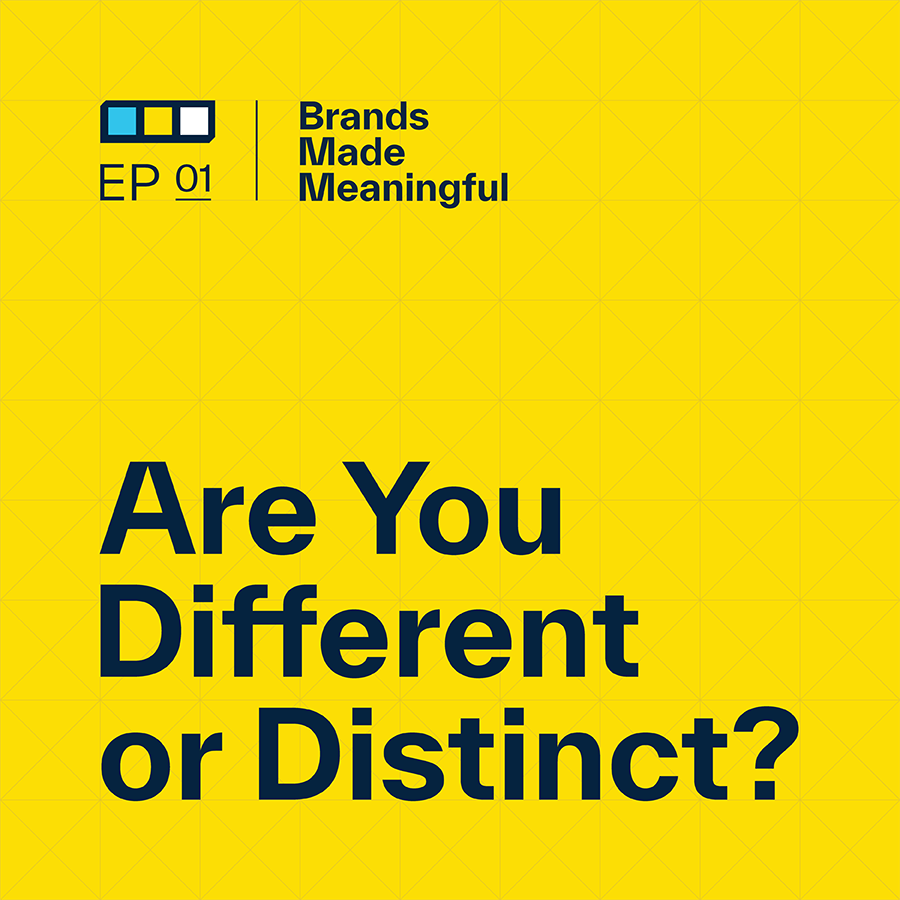EPISODE 39
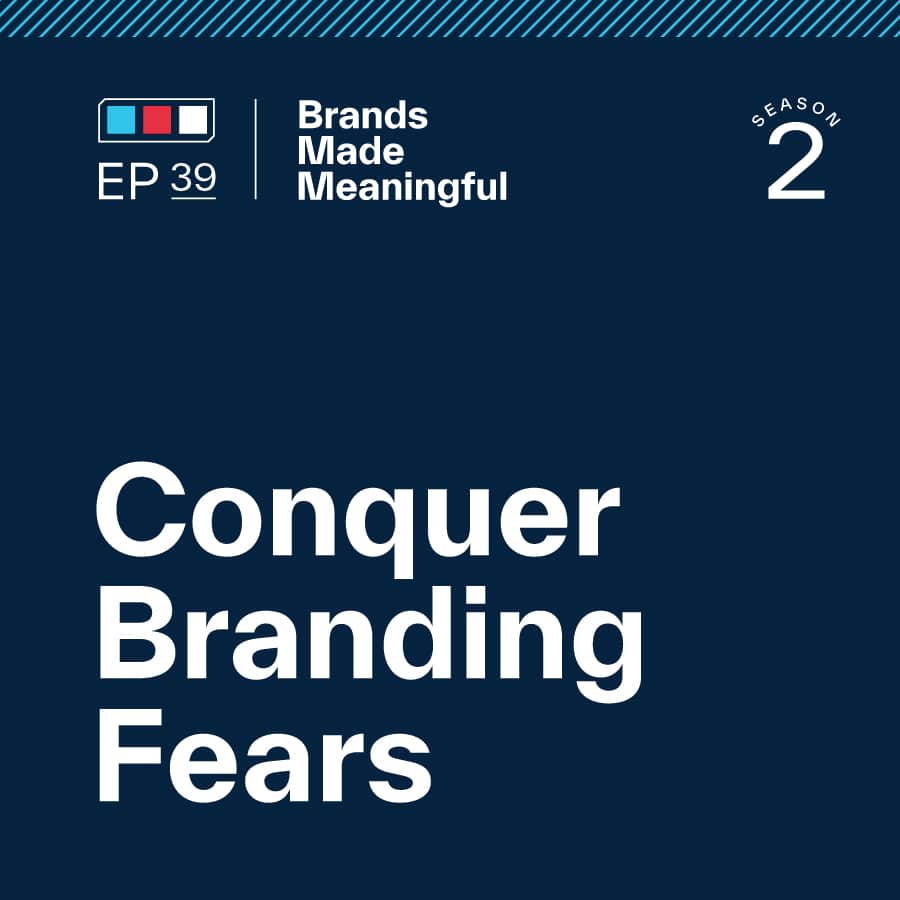
Conquer Branding Fears
Episode 39
Derek and Tucker dive into how to overcome the fear of change and the nature of constant refinement of your brand.
EPISODE TRANSCRIPTION
Today we’re talking about fears.
Tucker We’re talking about taking the big leap of faith when it comes to branding and why that’s so hard for people and clients. This topic actually came out of a conversation we recently had with a client going through the process of branding, We’re just starting that process and she said, This feels like a dark art. This feels like a complex, mysterious process. How do we have a conversation today where we kind of clean that up a little bit and take away some of that fear?
Expand Full Transcript
Derek So it’s not magic, which I think was what she referred to it as. Like, you guys just seem to stir this all up in a pot and wave your magic wand. How does this work? How do you do this?
Tucker I personally think that sounds a lot cooler than the actual process, but the process is really tested, right? It’s one of those things where we test something and come back and change it and we figure out answers. But I want to talk about some of those things. I think that this is really important for people to understand that it’s not really a leap of faith. The way that we work through our process is really meticulous. And when we have an answer and we have a solution, we believe that that is the right solution.
Derek One of the challenges in what we do as a branding firm is that our final deliverable of what we give somebody, whether that’s a strategy, brand messaging, marketing materials, a logo, or visuals, we have to create all that. So they are absolutely taking a leap of faith based on examples of work that we’ve done for somebody else. But what we can’t do is say, Here’s the vacuum cleaner that you’re going to buy in trade for, you know, whatever monetary value it is. You can walk home with this today. There is some unknown and some inherent trust in taking that first step that says, Okay, we’ll engage with you guys. And I believe, based on our conversations and other examples that you’ve shared with me, you guys will successfully get me to the end. But I can’t tell you what your new brand identity is going to look like until we go through our entire process, which is what makes those things successful. Contrary to popular belief, there isn’t a three-ring binder of solutions on the shelf that we open up and sell to you.
Tucker Let’s dive into what we’ve outlined as three really key pieces that kind of lead to fear. Why are people so scared? So the first one that we talked about is the fear of losing their identity. When we’re looking at a project, there’s a lot of people, whether it’s the direct contact that we’re working with or the people on their team, that come out saying, Wow, well, we’ve been like this for so long, and if we change, then will our existing audiences erode? Will we lose the fans that we’ve had forever? And how do we maintain that kind of stability within them but also go after new people? And that can be hard because some of these brands that we’ve worked with have been the same for 30, 40 years and you don’t know how people are going to react.
Derek And they’ve made it 30 or 40 years and they’ve been successful to have that longevity, largely in part because of who they’ve been. So to be afraid of losing what got us here is a very natural fear.
Tucker Another one that we run into all the time is the uncertainty within the market reception. How are people going to like this? We’re going after this new audience. Are people going to like that when we do this? How do we know that people are going to like what we have or they’re going to buy this brand that we’re going to put on the shelf? And that can really come from the fear of the unknown. Just like you said, people don’t know the final solution until we’re almost there already. Everything’s already signed off. But there’s almost that fear of even if it’s a great solution to me, how do I know that it’s going to work? We’ll talk about the solutions for these in a second, but I think that that’s a really big fear for a lot of people.
Derek We’re working with a golf club whose general manager at the prior course that he worked with introduced a new identity design that they had been working on, and the pushback from that club’s membership was so negative and so strong that they just scrapped it and went back to the old one. So he had that baggage in working with us and kept asking us the question, What if people don’t love this?
Tucker And we hear that a lot. We were just at a conference a couple of weeks ago and there was a lot of, Hey, we did this type of branding project and it didn’t work. And I think you can talk through those things and say, Where’s the fall line there, and how do we figure out what’s right? There’s always a way to figure out those kinds of mistakes, and there’s probably a mistake along the way. The third one is clarity of direction. People get scared because they don’t know where they’re going. That’s the fear of the unknown. But they also get scared when there is a lack of communication within their own team to say, I’m scared because we’re going to open up some demons here that aren’t ready to be talked about. This happens a lot more than you’d think when we sit down for a kickoff meeting or we sit down for a discovery meeting and the team is not on the same page. And the people who are fearful of that know that they’re not on the same page and they don’t necessarily want to hash all of it out right now. But that can really lead to finding clarity down the road.
Derek Ambiguity. And, in general, what we’re talking about is a fear of the unknown. We don’t know what the future holds. Not knowing what paths we’re going to take is one of the major causes of anxiety. But in this case, when you have that lack of clarity on your own internal team, whether the leadership isn’t on the same page with what do we do, who do we do it for, or if it’s the staff of that team looking at the leadership team saying, Hey, guys, you’re not telling us where we’re going, what we stand for, or what we’re all about. That’s a big problem.
Tucker I want to get into one of the examples that we’ve worked through with a client before. I want to go a little bit more in-depth with this one. And then I want to do a second one where I can just summarize that again. We don’t have to get super in-depth with all these answers. But there’s an interesting case study here within one of our clients, Game One. And that process was interesting to me. So it was eight sporting goods organizations becoming one. We call it the one powerhouse that’s really going to help challenge that market. The market was owned by one company.
Derek By a competitor. They still are.
Tucker They’re still a huge competitor. But eight companies coming together posed a really good opportunity to say, Let’s challenge these, let’s keep moving forward. But the difference is that they all come from different parts of the country. So there are eight companies coming from different parts of the country, having different cultures and really wanting different things. All of these need one name, one brand, and one good story that kind of combines them all. And so that’s interesting on its own. But they had tried to rebrand and rename themselves already.
Derek The eight organizations had come together under common ownership and had tried and failed to do a previous brand update. Unification.
Tucker So our team comes into this landscape and the leadership team had just come in at that point too. So we’re all kind of sitting here looking at this process and saying, Okay, there are some big challenges. We’re going to have to overcome not only all the fears we’ve talked about before – What if it doesn’t work? What if we don’t like it? What if yada, yada, yada? But also the fear of we’ve already done this and it hasn’t worked. So what makes it possible that it’s going to work this time?
Derek And on top of that, going back to the first fear that we talked about, which is losing identity, all eight of these companies had decades of success. These weren’t startups. These were long-standing 20, 30 year old companies several of which were competitive with each other. There were a couple of these organizations in similar parts of the country that saw each other as direct competitors. Now we’re going to become partners, but we’ve always known your organization under this name and under this brand, and likewise, this name and these colors. For them to give up that identity, the logo, the brand, the symbol, the colors, who they are, their name, to give that up, to then take that leap of faith that we’re going to follow our new leadership and merge under a new name, one guy said, I have to give up my whole wardrobe. Like all the clothes and golf shirts that I wear have this stuff on them. And so losing their own identity on top of the fear of what if this fails again, we’ve already tried this, was the hurdle that we had to work through.
Tucker And there’s an internal external balance here. So the whole brand was built and owned and totally lived by this internal team of salespeople and customer service people and production people. But they were also questioning, What do our customers think? We’re a family-owned company from Texas. We have customers from Texas that love that part of us. So how do we tell that story in a way that makes it feel like this is an upgrade? This is not a downgrade. We are not losing our identity. We are bolstering our identity. It’s a long way of setting this whole thing up. But that can kind of show that obviously there are fears, there are going to be challenges, there are going to be process questions when it comes to how we do this and how we go about it. I don’t say the leadership had fear because they were very confident that this was what we needed to do. We need to move forward. But to get over the fear for the salespeople, to get over the fear for all these eight different people not in leadership, these eight companies having these big teams – it’s about a thousand people that work for this company all combined – we knew that what we needed to do was to get information from them, for them, and then kind of spread the word. So it’s to have interviews, it’s to have surveys, it’s to really talk to people, understand their concerns, and then voice those concerns to everybody to say, Hey, we’re worried about the name, and here’s why, and this is what that name should stand for, and this is what it’s all about until the point we all agree on it.
Derek And in full transparency, with respect to Jamie Wisely who was the CEO that brought this organization together, he spent months and months doing an incredible amount of what you just said – of due diligence, of learning, of talking, to then to identify that the opportunity to unify as one brand gave them great upside so that he was able to show them or paint the vision of the success of what could happen with us as an organization if we choose to do it this way.
Tucker So there was already all the groundwork laid to say we need to move forward in this direction. But then it’s how to move forward in that direction. So, as I said, if we’re talking to the people on their team, understanding their concerns, raising those concerns, we do something in our discovery process which is to just throw it all out on the table. We had all these interviews. I think we interviewed about 30 people.
Derek Customers and employees, leadership, and people who are working in the trenches, so to speak.
Tucker And then we put all of that onto a page. So we took all those interviews, we distilled it all down. I think we had a 75-page book, which was crazy at the time.
Derek Of insights.
Tucker Of insights to say, Here’s what this person said and this is what it meant and this is how we’re going to use it. All of those things came together for us to really make a good argument for why this isn’t going to be that hard. Because we knew the companies we were getting into. We knew the eight organizations coming together and we knew what was really important to each of them. We made sure we checked off all those boxes so that they felt like they owned the brand. And that was really our goal.
Derek So in listening to them to appease these fears, especially of, I would say the the management level, maybe not the leadership team because they were the ones leading the charge, but the people right next to them, one, they were able to upfront address the fear of losing their identity. They were able to describe the upside of giving up their old brand and embracing a new brand and to tell them and explain to them, not only from what we’ve heard from you but also from the market research that they’ve done. For future market reception, can’t guarantee that. We won’t know that until we know it. But at least from an internal standpoint, what they did was they established clarity, and direction and articulated the hell out of it and made it crystal clear who we are now, where we’re going, and what we’re all about.
Tucker There was a point where we were talking to customers and we had the confidence to say, the customer said this, this is what they care about. As long as we stand for this, that’s all that matters. And I think that once we got through that process, we could confidently say that the customers would either like this or they would be fine with it in the transition. You wouldn’t erode that customer base. You would basically be able to build on it. But really the the end thing for all of this was once we built the identity, once we worked with their leadership team to get it all set, it was rolled out on an internal campaign that really just helped tell that story to their team in ways that they could understand, they could embrace, they could have this fear taken out of them. So how do we build confidence? It’s through transparency. We have a process. Here’s why we have this process and then here’s how we can help you in your process of rolling it out to your team.
Derek Let them know we have a plan, we have a vision, and this is what it means to you, and this is why it’s going to be good for you. We would love for you to see yourself in the future of this. And so here’s what it looks like.
Tucker So our goal is to never come to the table with, Here is your identity. Thank you very much. We’ll see you later. There’s a lot of, here’s the identity. Here’s how it works. Here’s why we do it like this. So the analogy that I use all the time when someone goes, Well, how do we limit that fear? It’s the same thing as if you have a fear of flying. Then you fly with a pilot. That’s the easiest way. And I know this because I’ve seen it happen. Maybe this is a pro tip, if you’re afraid of flying, go talk to a pilot. They’ll explain to you how the lift works and how the drag works and why the plane won’t fall out of the sky and how this all happens and what turbulence is and all those other things. And getting through that, our goal is to teach you enough so that maybe you can’t fly that plane on your own. You can’t build the identity right there and then. Your job is to lead the company, but you know enough to say, I’m confident in where we’re going and how we’re going to get there and this is going to be great. So when we came out with that and did all that, it was great. They had they had a great reception for it. Their team had a great reception. The eight companies came together as one. It was great. And the customers loved it. At no point did we get pushback on it. And that made it easy for us to say, Here, look at that. And for them to go, You’re right.
Derek Not only did their customers embrace it, but the partners of the brands that Game One sells embraced it. It made it so much easier for them. And I don’t have the results off the top of my head, but like double-digit percentage revenue growth, the growth that they’ve achieved in just about 18 months after launching this rebrand has been incredible.
Tucker The other one I want to just touch on and we don’t have to dig way down into it, is the Minnesota Vikings. That project I think is incredibly impactful for the idea of conquering the branding fears. And their fear really comes from the fact that they have more than six years of history working, helping, and being in this community that loves them and cherishes them. And they know in order to keep building upon their brand, they need to evolve and they need to grow. But that becomes challenging if the people who are your biggest fans like you just the way you are. So for them, there’s this idea of how do we grow market share without eroding that current fan base? And that challenge became a big fear. We don’t want to change at all. We don’t want to change how we are. We don’t want to change how we talk. We don’t want to change like this because we know this, but we know we have to. So how do we do that? How do we go about that? And the process that we took with Partners Sprocket is actually a fantastic way to look at it. It was customer surveys, it was customer research to the point of understanding what the fans really loved about it and keeping that essence there, keeping the chorus. With that brand and transitioning them, it’s almost like if you really look at how to limit your fears, it’s with more information. It gives you confidence, it keeps you grounded in understanding what other people want, not necessarily what your gut tells you, even though the gut can be really helpful. But I think that that’s a good case study for people just to understand. And we could walk through that at a different time.
Derek What’s the question that Sprocket asks? If you had the answer to this question, then what would you do with it? The Vikings had a lot of questions. In your specific example on this side of the project that we worked on, it all came down to having nothing to do with visual creative at all. It was working with them to, one, understand who their current customer segments are, and what each of those customers want, and then to identify the up-and-coming, especially gen-z customers, who want different things and to understand that. And that clarity was great because there were some assumptions going into it that we all had as a team. Some were validated and some were completely turned on their heads once we had a chance to talk with and survey enough people. So now they can move forward confidently, not only to say this is who we are and this is authentic to us, but now we know that this aligns with the people who we want to grow as our fans.
Tucker And it’s hard because we’re all from here. The majority of their team is from Minnesota. We’ve grown up here with the Vikings. It’s hard to take your personal bias and set it aside, but that’s what research allows you to do. So there’s a lot of gut-intuitive things that go into it. But I think our process, the way that we can always help clients move forward in a more productive way, that takes some of the bias out of it, is the research component. So let’s dive in a little bit into those. I outlined five. I don’t know if you agree with these or if you think they could be added to. But there were really five things that if someone’s working on a project right now and they go, How do I overcome this? I want to change the way I look or maybe I want to change the way I sound or my writing style. How can I overcome the fear of changing? Is that going to be a good thing or a bad thing?
Derek Seems like common sense, but it’s to define what your objectives are. Why? If you want to change the way you sound or change the way you look, then there’s a problem or an opportunity that the current sound or look isn’t solving. So to figure out what it is as clearly as possible, what is it that you want to do and why?
Tucker What we hope to achieve would be a great question to answer because these projects can go sideways fast. If you don’t put parameters around it, you’ll end up trying to change everything and maybe everything doesn’t need to change. So that’s kind of this key thing. And then also, who’s our target audience for this? Because I don’t know if people have that wherewithal to go, Okay, who’s this for? It’s not for you generally, because you’re probably selling the product. You’re not necessarily buying the product. But who is it for and what are we trying to actually achieve with this? And the smaller bites you can take, probably the more possible it’s going to be. The second one is research and analysis. I just harped on this for like 5 minutes, I felt like. But the research and analysis help so much to have clarity. It’s the confidence. It gives you the idea that this is what people said so this is how we’re going to move forward. Whether you pair that with gut instincts or anything else, that’s what I would do.
Derek There’s a variety of ways to do the research, and I won’t get into how to execute it, but it’s easier than ever now with all of the digital tools and resources that we have to take a relatively substantial sample size of who it is that you’ve targeted, who it is that you are trying to talk to, and you can very easily learn more about them, what their habits are, who they are, where they are and what they want.
Tucker The third one is collaboration and communication. If you have a fear on your team and no one is talking about it, I can guarantee you someone else has that same fear. I don’t know what it is, but it’s this feeling of, Oh, you’re scared about that too. Okay. Sounds good. At least now we know that is a big red flag and I’m not just being weird about it. Communication is super key to understanding not only the problem or the fear but also why that’s scary in the first place. So we can talk about it and say, Well, I’m afraid of changing the way we look because of this. And you can say, Well, I’m actually afraid of changing the way we look because of something else. And that can help us ease each other’s fears by going, Well, I’m not scared of that because of whatever.
Derek I don’t mean to downplay the fears at all. But I would say in almost every single conversation that we’ve had with a client or a prospective client that we’re talking with when they voice what it is they’re afraid of, we’ve worked with several other people that have had that exact same fear. Maybe for different reasons, but there aren’t a limited infinite number of fears. There’s literally kind of a handful. And it kind of comes down to the same things with respect to branding and talking to people, not only in your team to confirm that, but also to talk to somebody like us, for example, who’s experienced in helping other companies with those exact same fears. It will ultimately be the pilot that you talked about before, to come alongside somebody who says, Well, this is what we do, we do it all the time and it’s okay, I get your fear. I understand it. I totally empathize with it. You may have a long road to overcome it or a short road, but we at least know what the path is, which is what we’re talking about to get you there.
Tucker The fourth one – if you are afraid or you are overwhelmed by a branding initiative, then I would suggest taking a phased approach. And that phased approach can help you do a bunch of things. One, it can help you turn over stones a little bit more meticulously to say, If I’m going to do research, I’m going to do it very in-depth before I move on to the next part. It helps you kind of take those steps in the process more clearly. Because if you’re only thinking about the website down the road and you’re like, I know I have a new website coming up, I know I need to do a website, but I really would love to work on my identity in my voice. If you’re only thinking about the website that can make you make decisions at the beginning of this process that aren’t going to be right for you. You’re almost designing that brand with the website in mind, and that can be hurtful to the success of it. That’s where you can then erode that current market base. You can start alienating certain customers because you’re only thinking about the ones that access you through that website. So there’s this level of a phased approach that can really help you just kind of calm down, slow down, and have clarity around what’s that next thing I need to do and find out.
Derek It’s how we’ve built our entire internal process – taken on a rebrand or a packaging design or a website design or a catalog. At it’s face value that can be incredibly overwhelming. That’s why we break it down into the steps and the process that help us get from one to the next to the next in a thoughtful, meaningful, comfortable way. So even starting with a conversation about, I feel like I have a branding challenge, but I’m afraid of X, Y, and Z. What do I need to do to help me overcome those fears and understand what I need to know so that I can set my objectives? It might just start with a conversation.
Tucker I think that there’s a lot of people that come and talk to us and they go, Oh man, I don’t know if I can bite all this off right now. Whether it’s financial, whether there’s a lot of stuff on your plate and you can’t do it all right now, or whatever. That’s why our process is a phased approach. As in, we don’t need you to bite off on all of it. The goal is to get you one step closer to your goal. So our goal is to get you closer to your ultimate success. So as long as that happens in a slow approach that works and takes time, that’s fine. And I think that sometimes that’s the best solution for a lot of our clients. The last one is to monitor and adapt. So what I mean by monitoring and adapting the way that you’re taking on your branding is to move forward and do that, but also look back. If we have a five-step process, there are a lot of times when we’ll go through steps one, two, and three, and then when we get to designing a new logo for someone, they’ll forget all the stuff that went back. And so we need to say, Nope, remember all of this, remember where we came from. This is not just the next step, as in let’s solve this and move on. It’s we have to build upon what we have. So if something’s not working, you need to look back and ask what has worked and how to adapt from now. But that can really be a key part. It sounds super simple, right? Use the stuff you’ve already found out. There are a lot of times when we have to remind clients to say, Yep, keep remembering what we’ve talked about because this will keep coming back.
Derek Any branding process inevitably gets subjective. You get into reacting to things that you’re being presented where you want to say, I like that or I don’t like that. And the process that we’ve gone through is learning who this is for. Why are we doing this in the first place? What is it that the people we’re doing this for want? And what is your organization’s strategy to provide that to them? Then we go back to that to say but remember that the reason that this was done was because we heard this and you said this and then our research validated this. You can still not subjectively like that color, but at least then there’s comfort in taking the fear or the guesswork away. At least you can understand why this was done, and this was done very purposefully. And that’s not to say that you can’t tweak and change. So if you’re going to continue to monitor and adapt, the next thing to do is to come back a year later or six months later or 18 months later and say we did that with what we knew at the time. Now you’ve activated it, you’ve launched it, you use it. What’s working? Is there anything that’s not working or is there anything that’s missing? Were there any blind spots that have popped up or been uncovered since then that now we have the opportunity to bolster and fill out in that system?
Tucker When we work with a client and we’re talking about unknowns, everything seems daunting. This process is a process of change. And change is scary. Change can be really, really great, but change can be super hard for a lot of people. But that fear of the unknown, the fear of change, if you’re going through a branding process, that’s what you’re up for. And so getting your mindset right can help a lot to say, I know this is going to change. I know we’re going to run into things that I might not like and I need to be okay with that.
Derek And to know that the change is ultimately for the better. This isn’t surgery. The only reason that this is on the top of somebody’s mind or that they’re considering this is because the status quo isn’t working or the status quo isn’t providing the the value, the financials, the revenue, or the fulfillment that you believe your organization can realize. So you’re doing this for the right reasons, and that change is ultimately going to help.
Tucker So embrace the unknown. I would say embrace change. It’s good. If everything stayed the same all the time, it’d be super boring. Let’s follow up on this. This is a really good topic. I think there are a lot of people who need a little change management conversation every once in a while, to help them move through this.
Derek Talk with your branding partner. Talk with them and ask them, How do you do it? Pull back the curtain, show us your process, show exactly what it looks like, and demystify it. Show us the science and the intuition and the magic and the dark art. Explain to us how it works.
Tucker And there will be a little magic there. I think the way we go about it is to say we hope that when we find the final solution, our clients are never surprised because we’ve done such a good job of leading them there that they go, Wow, that’s really great. I’m not shocked, but it looks awesome. What I hate to say is that sometimes there is a little bit of art in there. There’s a lot of art in there, but there’s a little bit of magic. There’s a little bit of, how did you come up with that? I don’t know. It just happened. That’s okay. But if there’s too much of it, then it’s just pulling it out of thin air.
Derek So embrace the unknown, conquer your fears, and help your brand crush it.
Tucker All right. Till next time. Thank you.
Derek Sussner is a branding firm specializing in helping companies make a meaningful mark, guiding marketing leaders working to make their brand communicate better, stand out, and engage audiences to grow their business. For more, visit Sussner.com.
More Episodes Like This
Little Things Mean EverythingEpisode 71
Derek and Tucker take a look at the often missed and easy to overlook.
Build Flexible Brand Systems
Derek and Tucker break down the building blocks for long lasting branding.
The Club at Golden ValleyEpisode 69
Derek and Tucker take a close look at one of their recent rebrands.
When to Launch a Club Rebrand
Derek and Tucker break down how to find the perfect timing when launching a club rebrand.
Steps to Launching a Club RebrandEpisode 67
Derek and Tucker break down the steps to take and the reasons why you should consider a club rebranding.
Brand Marketing vs. Brand Design
Derek and Tucker define the line between marketing and design and how they intersect to inform one another.
Building Brand GuidelinesEpisode 65
Derek and Tucker show us how to build infrastructure guidelines to unify your brand experience across the board.
Club Identity SystemsEpisode 64
Derek and Tucker cover what Identity Systems entail and how to discern between internal and external methodologies.
Navigating Branding With a BoardEpisode 63
Derek and Tucker bring clarity to uniting your company under one cohesive vision.
Putting a Committee TogetherEpisode 62
Derek and Tucker assemble your need-to-know facts when putting together your committee.
The Guiding Principles of Private ClubsEpisode 61
Derek and Tucker go over the top ways private clubs can find the balance between pleasing old members while attracting new ones, all while making moves towards the future.
How Color Affects PerceptionEpisode 60
Derek and Tucker cover how to best convey your business with color.
Brand EcosystemsEpisode 59
Derek and Tucker break down how to craft effortless experiences when considering your brand as a whole.
6 Types of Brand TransformationEpisode 58
Derek and Tucker dive into 6 distinct types of transformations for a wide range of brands.
Tournament Branding For ClubsEpisode 57
Derek and Tucker discuss designing and delighting your club members with tailored events.
Brand Promoters & DetractorsEpisode 56
Derek and Tucker discuss how high level promoters increase your NPS and how to turn the tides on your detractors.
The Loudest Voices in the RoomEpisode 55
Derek and Tucker talk about gathering feedback while prioritizing every voice.
Determining A Primary AudienceEpisode 54
Derek and Tucker discuss if and when you should be honing in on your audience vs. casting as wide a net as possible.
Branding For ExclusivityEpisode 53
Derek and Tucker discuss the intricate process of naming your brand.
Measuring Brand SuccessEpisode 52
Derek and Tucker discuss how we measure our success in branding and a few key KPIs that help us understand our impact.
Branding For ExclusivityEpisode 51
Derek and Tucker breakdown how brands can create the perception that they are exclusive and only for a certain type of consumer.
What Makes A Brand SurprisingEpisode 50
Derek and Tucker break down the Sussner formula that we believe leads to a surprising brand.
Breathe Life Into Brand TraditionEpisode 49
Derek and Tucker discuss the intricacies and common pitfalls of branding for Private Golf Clubs.
They Key of Visual DifferentiationEpisode 48
Derek and Tucker break down the importance of differentiating your brand on a visual level.
Branding For Private GolfEpisode 47
Derek and Tucker discuss the intricacies and common pitfalls of branding for Private Golf Clubs.
Dealing With An Identity CrisisEpisode 46
Derek and Tucker breakdown how to identify and remedy a brand's identity crisis throughout thoughtful and intentional brand management.
Branding vs MarketingEpisode 45
Derek and Tucker discuss the differences between Branding and Marketing and how to make the two compliment each other.
Build Your Brand's FoundationEpisode 44
A brand's foundation is a critical element in being successful in the long-term.
Building a Constructive Branding ProcessEpisode 43
Derek and Tucker break down the steps required to build the most constructive and meaningful branding process.
What Makes a Brand Relevant?Episode 42
Relevance is a key piece of a brand's identity for creating clarity and connection.
Your Right to WinEpisode 41
Derek and Tucker discuss the “Right to Win” and the odds of your brand's success within your target market.
An Intro to Sub BrandingEpisode 40
Derek and Tucker discuss the nuances of developing sub-branding and strategies.
Conquer Branding FearsEpisode 39
Derek and Tucker dive into how to overcome the fear of change and the nature of constant refinement of your brand.
Balancing Strategy & DesignEpisode 38
Great strategy is a necessary foundation for great design—and great design brings great strategy to life.
Branding PrioritiesEpisode 37
Branding priorities are the actions and initiatives that shape or enhance a brand's identity, perception, and market position.
Invest in Your BrandEpisode 36
Investing in your brand benefits your company as a competitor in the marketplace, builds trust with customers, increases perception of quality, and drives employee engagement.
Why is Positioning Scary?Episode 35
Narrowing the brand's position is really a strategic decision to focus the brand's offerings, messaging and target audience on a specific niche or segment within the market.
What Are Brand Consultants?Episode 34
Derek and Tucker discuss the importance of hiring expertise with a wider breadth of knowledge than just visuals.
Hire for Brand FitEpisode 33
Hiring people that fit your brand is key in order to maintain brand authenticity, positive culture, and consistent messaging.
Your Brand’s Stance MattersEpisode 32
Your stance can help define your brand from a core level and make branding, hiring, and marketing not only easier, but more meaningful.
Levels of Executing a Brand RefreshEpisode 31
If you have a brand strategy in place, how do you execute it?
The Role of Features & BenefitsEpisode 30
Derek and Tucker discuss the importance of features and benefits within the context of branding, selling, and marketing your products and services.
Should You Listen To or Lead Your Customers?Episode 29
Within the challenge of any rebrand is the challenge of managing customers' perception of change.
Managing a Brand TransformationEpisode 28
Episode 28 discusses the highlights and challenges of rolling out a new brand, both internally and externally.
Living Your BrandEpisode 27
Your brand is not this shiny trophy on the shelf. It is something that you are molding every single day.
What Makes a Brand Authentic?Episode 26
Season 2 starts off with a discussion about building authentic brand experiences, both internally and externally.
Reviewing your Competition's CreativeEpisode 25
Derek and Tucker discuss the process of reviewing your competitors' creative strategy to better position your brand within the market.
Interviewing your Audience for InsightsEpisode 24
This episode details the process and benefits of interviewing your audience as part of the branding process.
Assumption ReversalEpisode 23
Derek and Tucker discuss how we change our thoughts and get into a different mindset to refine and revise our branding.
Developing vs. Amplifying a BrandEpisode 22
Another way to say it is, development is building and crafting your brand story, and amplification is then telling it.
Refreshing a Sporting Goods BrandEpisode 21
This episode shares the steps behind Sussner’s work in refining the Shock Doctor brand.
Defining PerceptionEpisode 20
Derek and Tucker discuss the positive and negative impacts of brand perception.
What is a Brand?Episode 19
Derek and Tucker discuss what defines a brand and what makes them successful.
Branding Golf Courses vs Golf ClubsEpisode 18
Derek and Tucker further hone in on golf course design.
Refreshing a Golf CourseEpisode 17
Derek and Tucker discuss the bar for golf course design – and how to push past it.
Let’s Talk Taglines Episode 16
Derek and Tucker talk taglines in today's episode.
Refreshing an Athletic DepartmentEpisode 15
Derek and Tucker sit down today to discuss what logos mean within branding.
Branding a Club Episode 14
Derek and Tucker discuss how to brainstorm branding a club.
An Intro to Internal Branding Episode 13
Derek and Tucker discuss the power behind internal branding.
The Value of Stereotyping Episode 12
Derek and Tucker sit down today to discuss the meaning of stereotyping within the branding world.
We’re on a Mission Episode 11
This episode digs into the rallying cry for the greatness your team is going to accomplish.
Aren’t Brands Just Logos? Episode 10
Derek and Tucker sit down today to discuss what logos mean within branding.
The Business You Are Really In Episode 09
Derek and Tucker sit down today to discuss how to discover what business you are really in to better understand your mission statement.
Clarity of Vision Episode 08
Derek and Tucker discuss the importance of looking ahead towards the big picture to better hone the purpose behind what we do in the now.
Branding B-2-B Environments Episode 07
Derek and Tucker discuss the Branding of Spaces.
It’s All in the Name Episode 06
Derek and Tucker discuss what a name can say - and not - about your company.
Delving Into Branding Data Episode 05
Derek and Tucker jump into the discovery phase of branding before it hits the drawing board.
Content Made Meaningful Episode 04
Today Derek and Tucker discuss the concepts within content and its common misconceptions such as the phrase "Content is King."
Brand Story vs. Brand Messaging Episode 03
Your story matters.
Visuals That Take The Cake Episode 02
Derek and Tucker sit down to discuss visual impact and what that could mean for your brand.
Are You Different or Distinct? Episode 01
It's not about being the only option, it's about being the right option. Join Derek and Tucker as they discuss Differentiation & Distinction.



